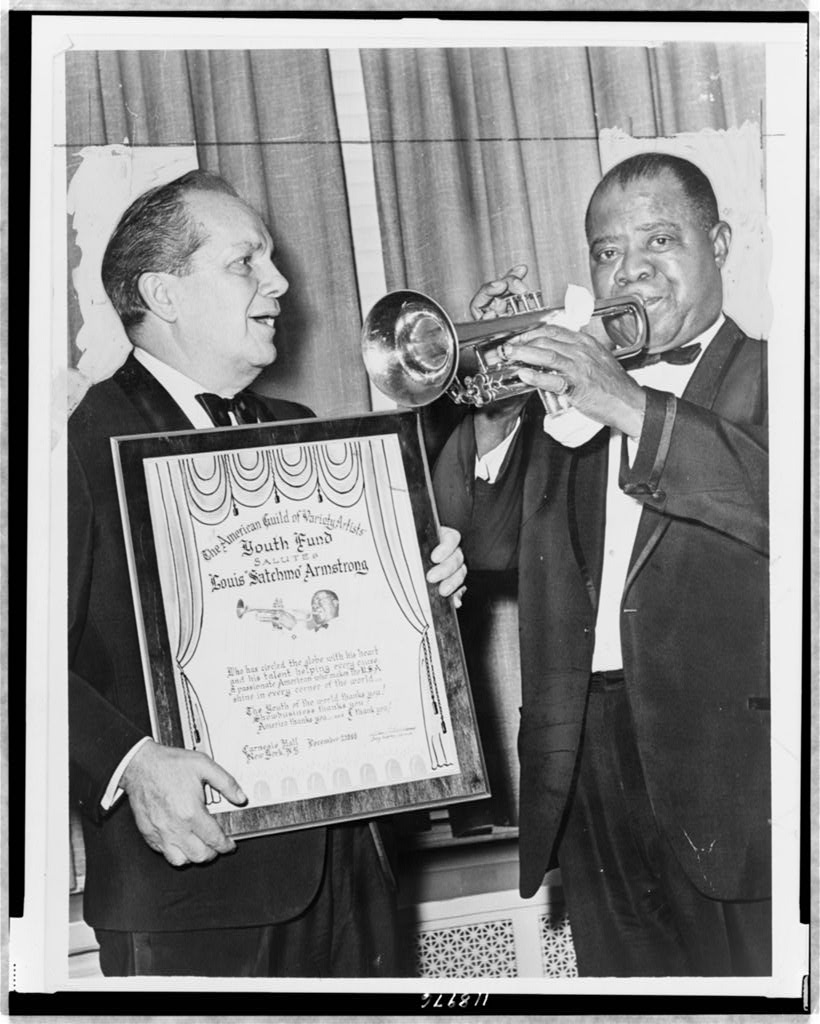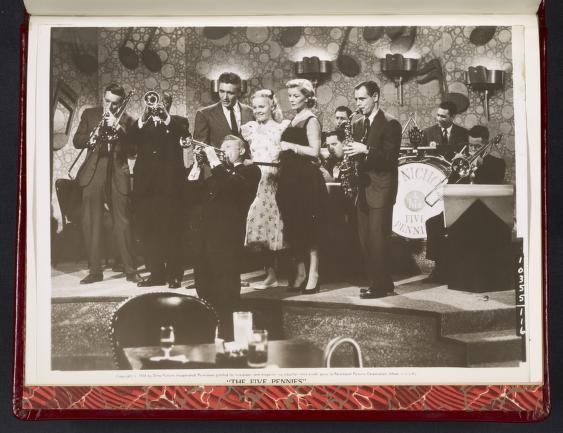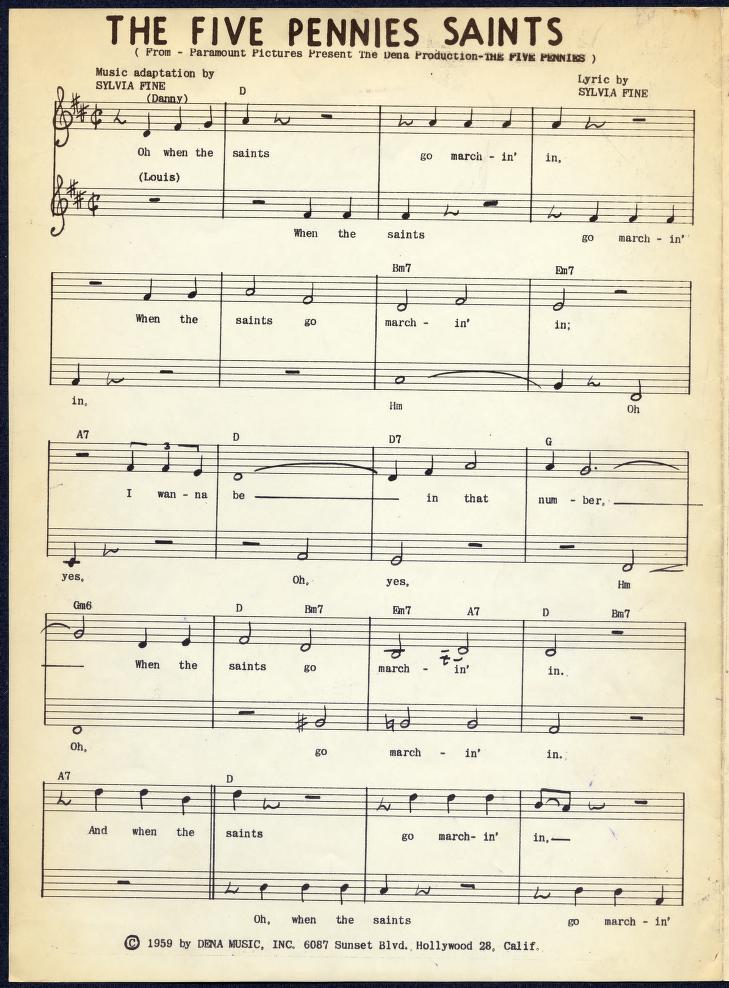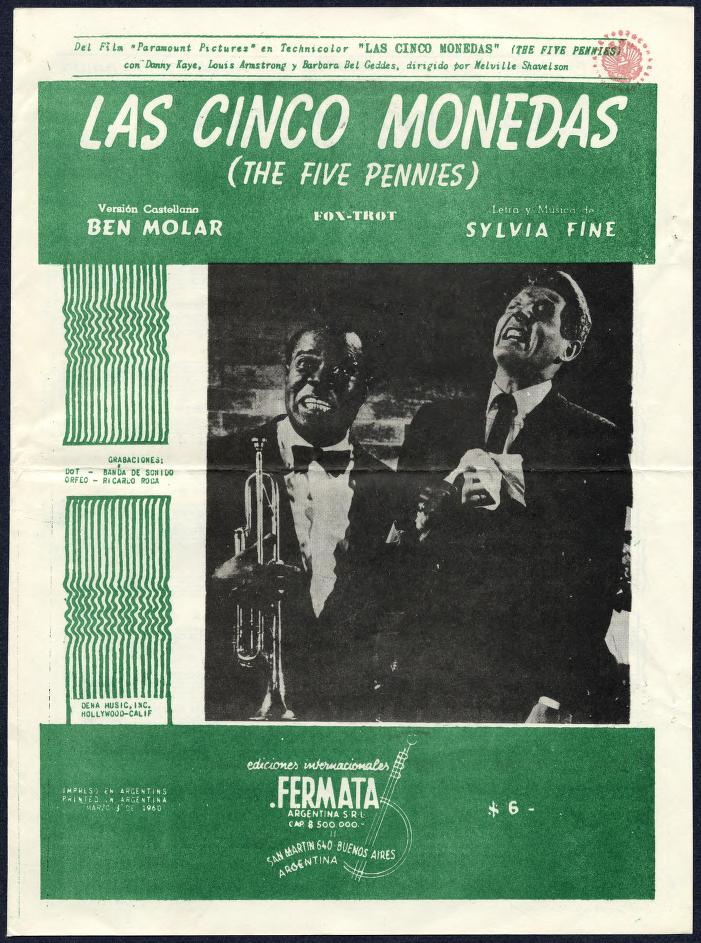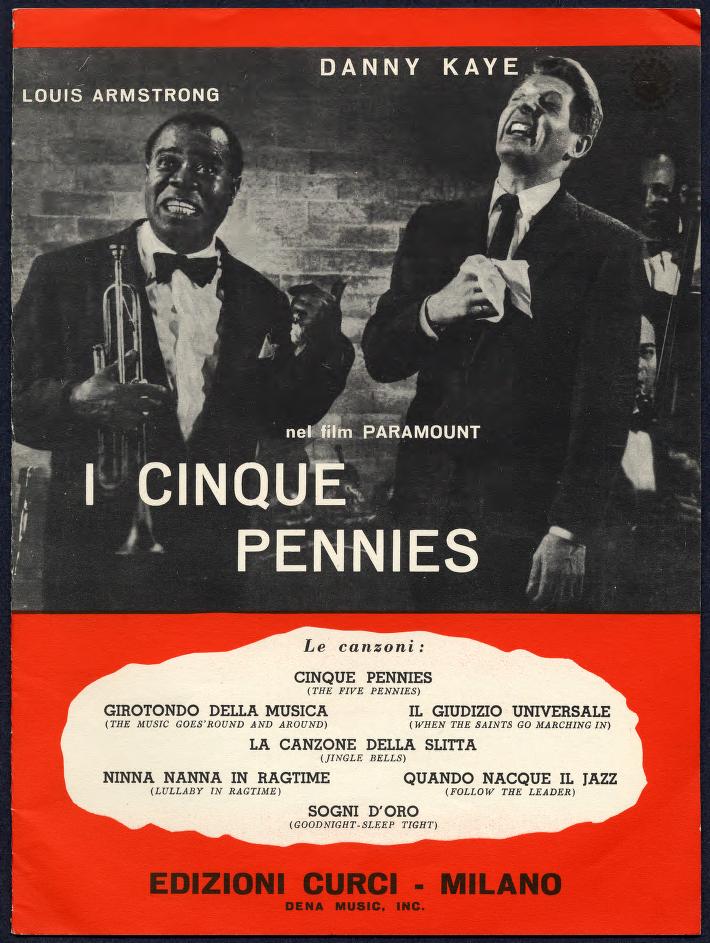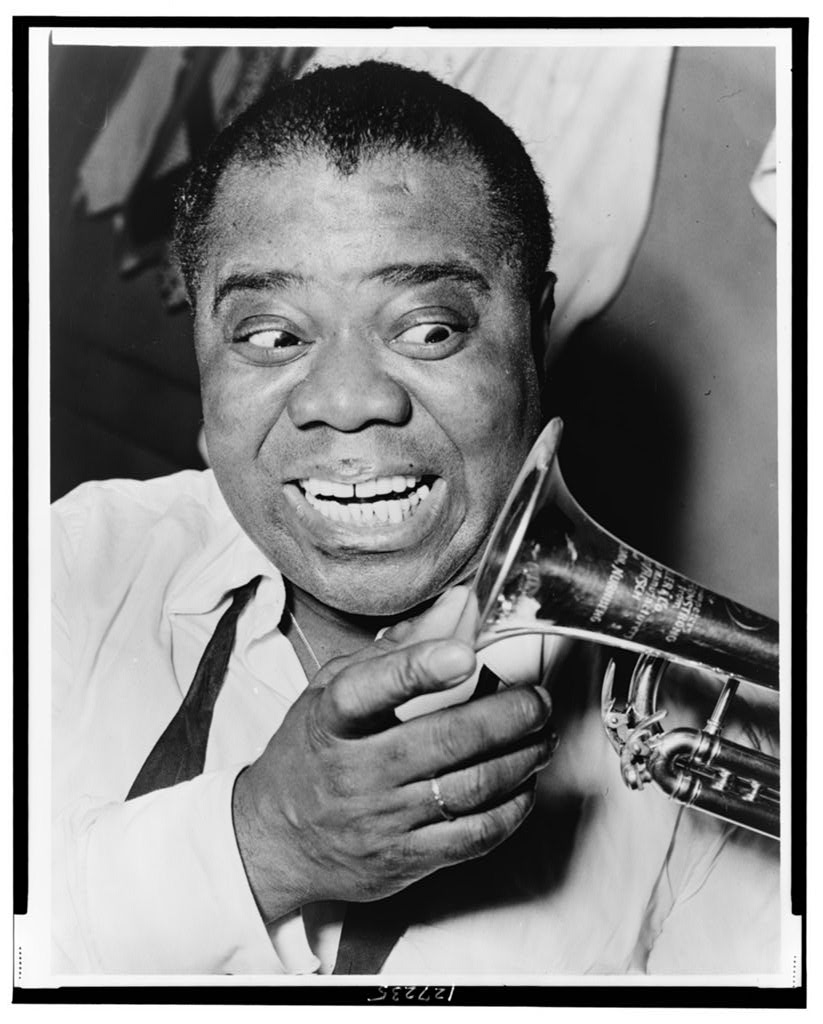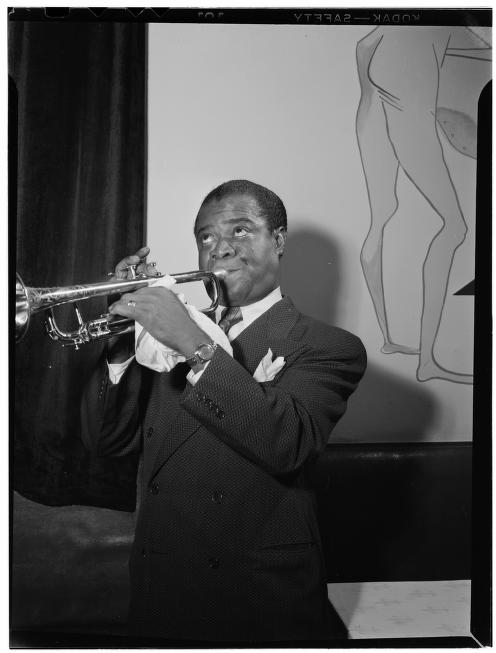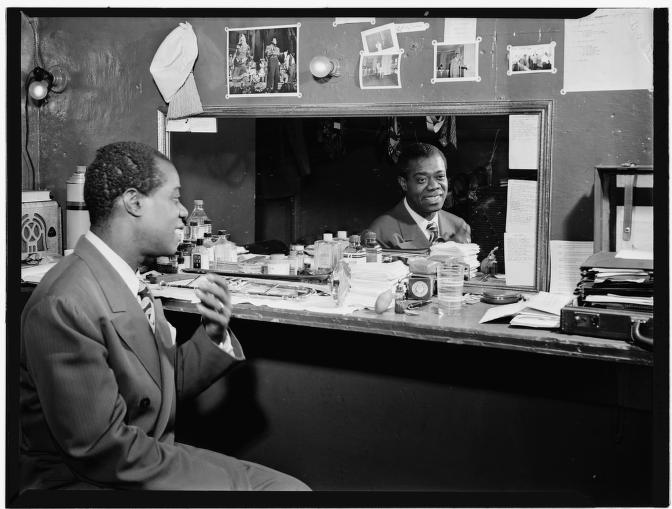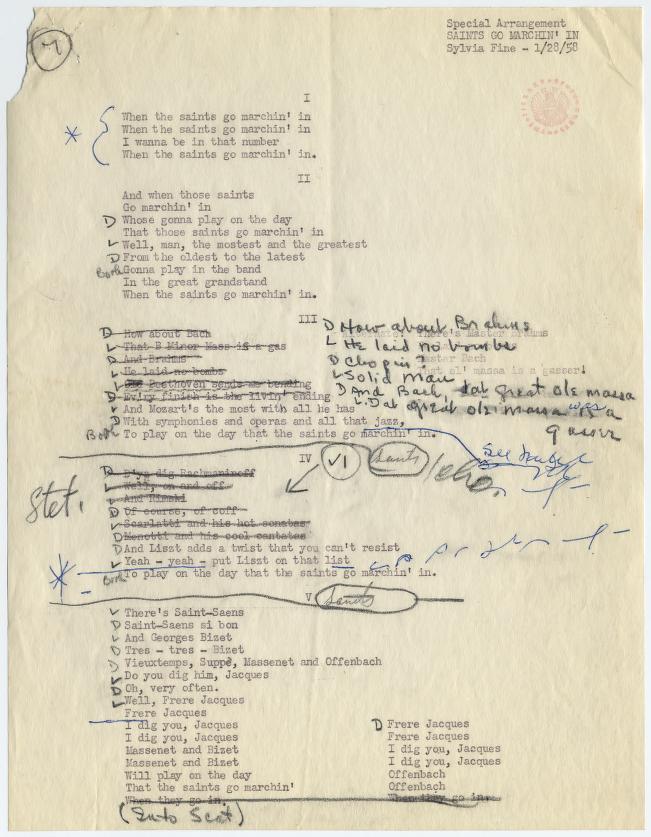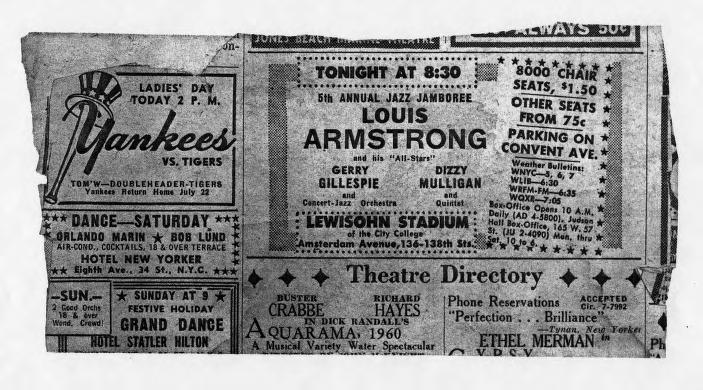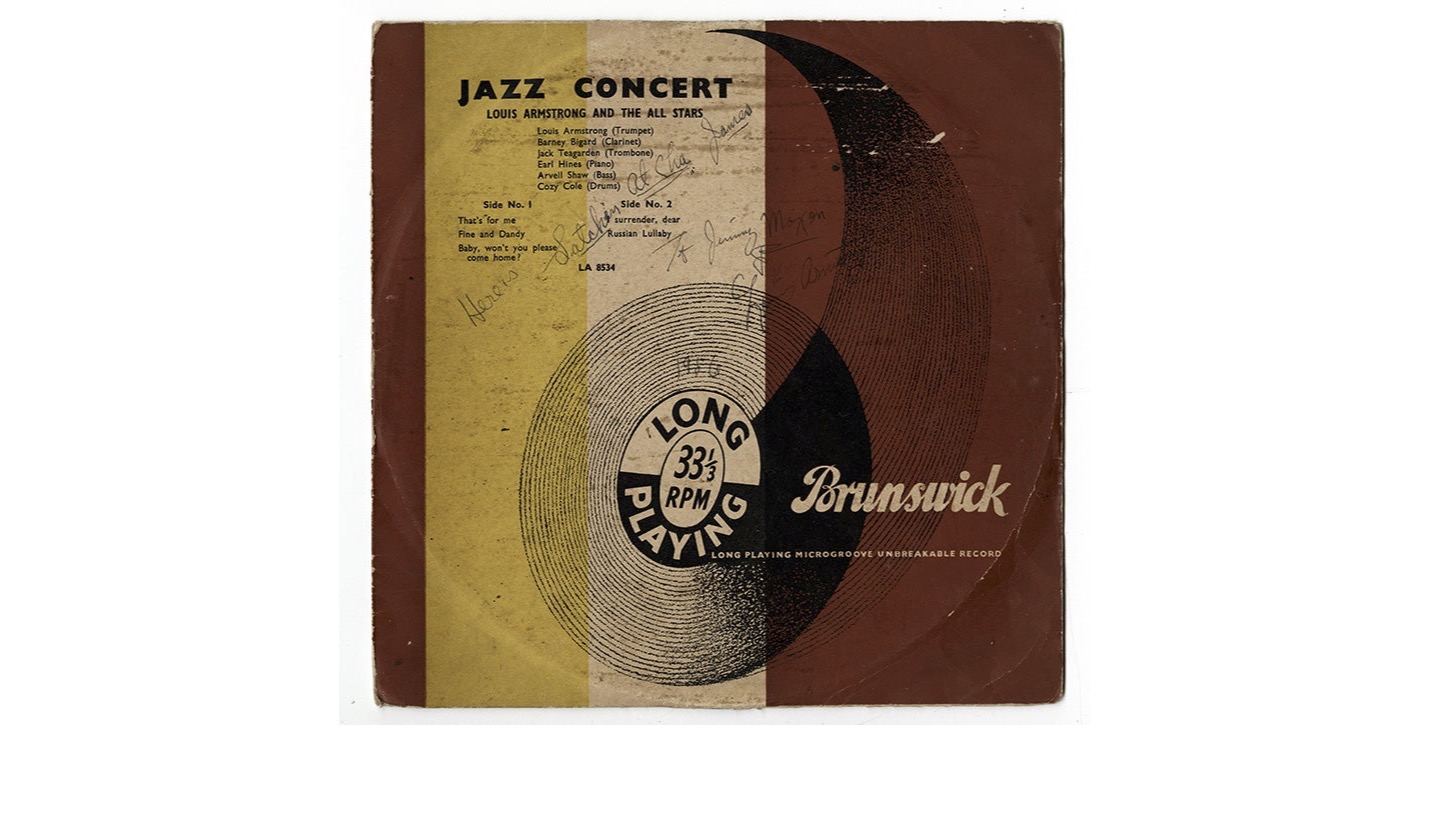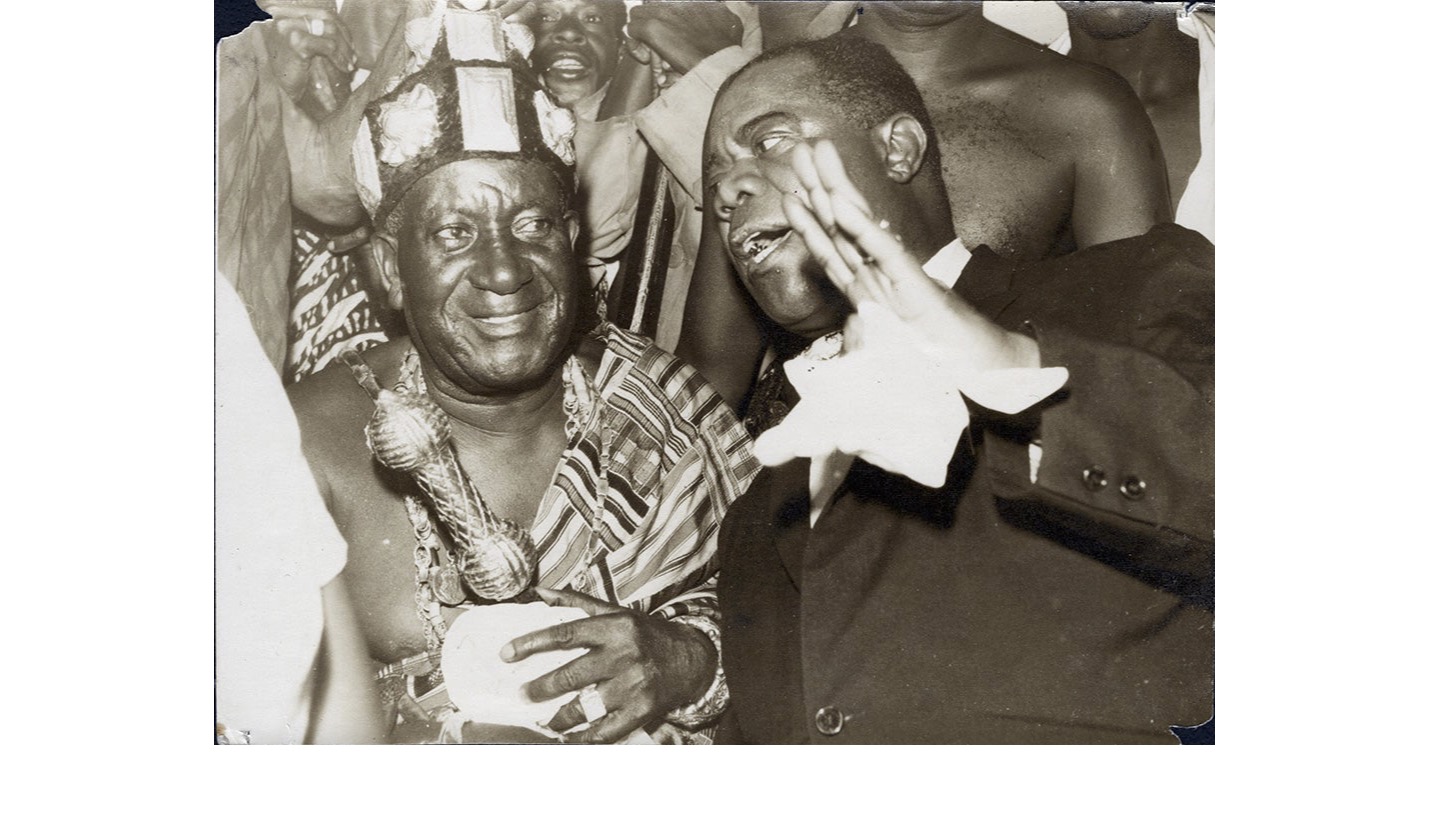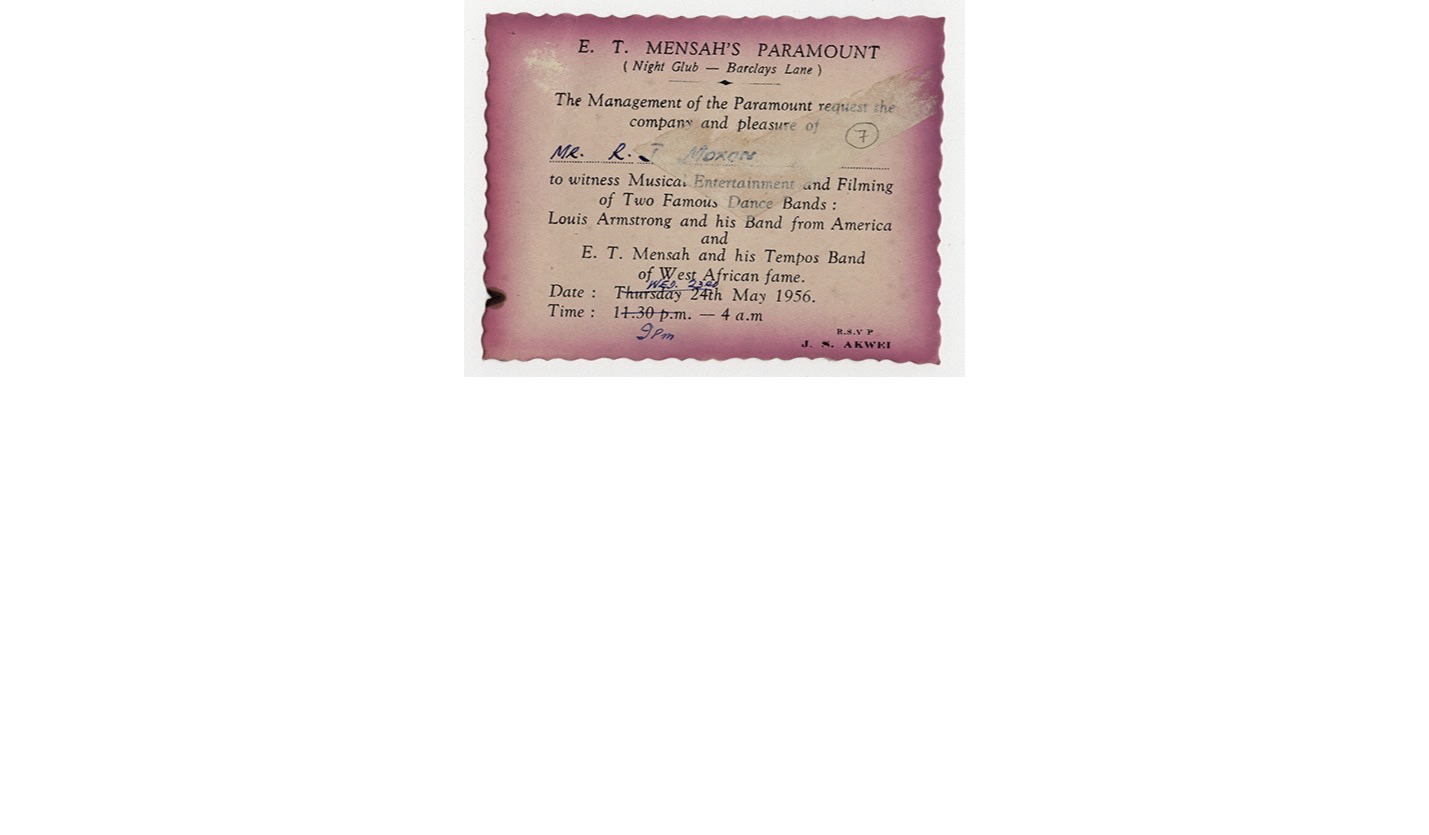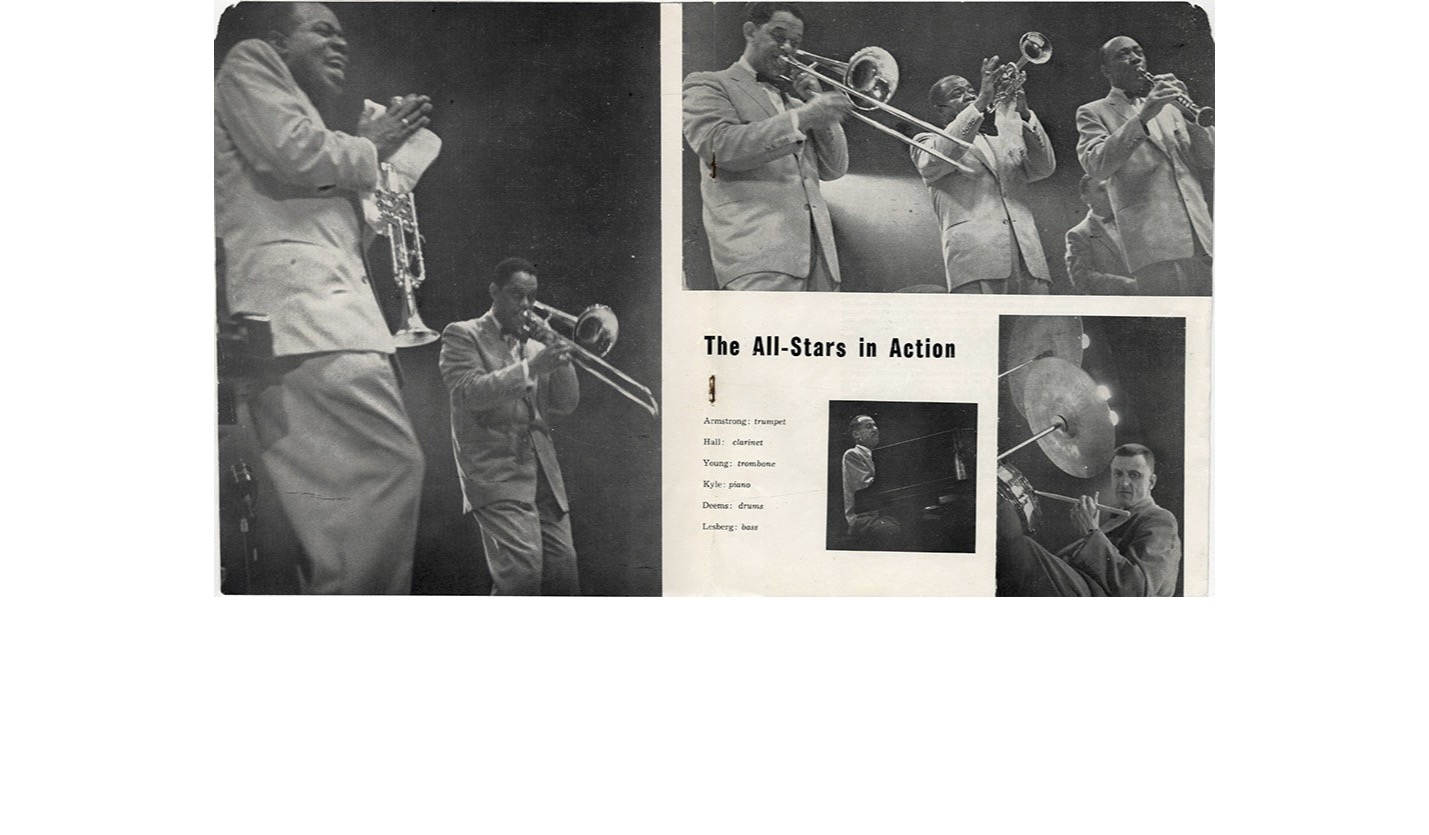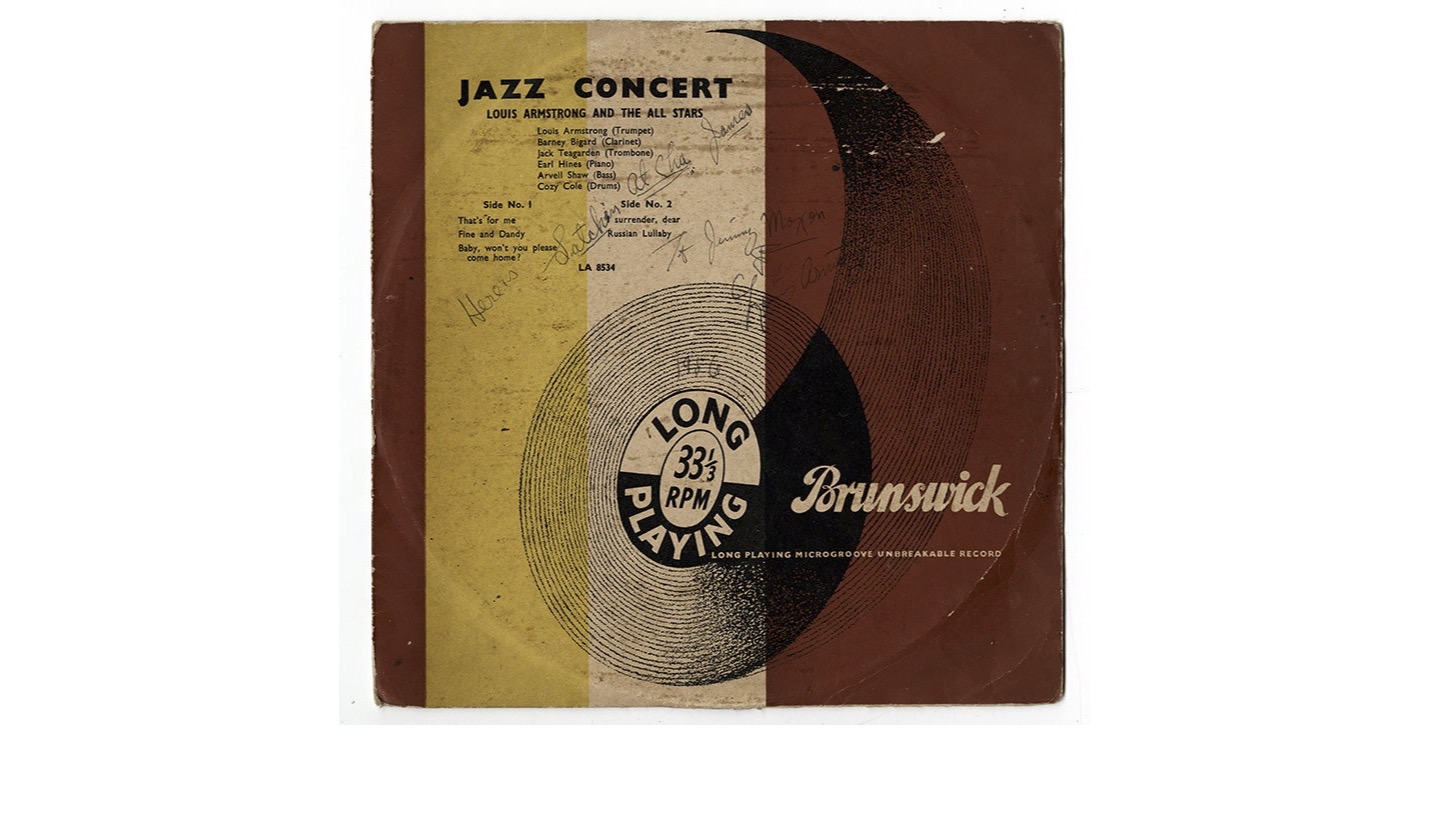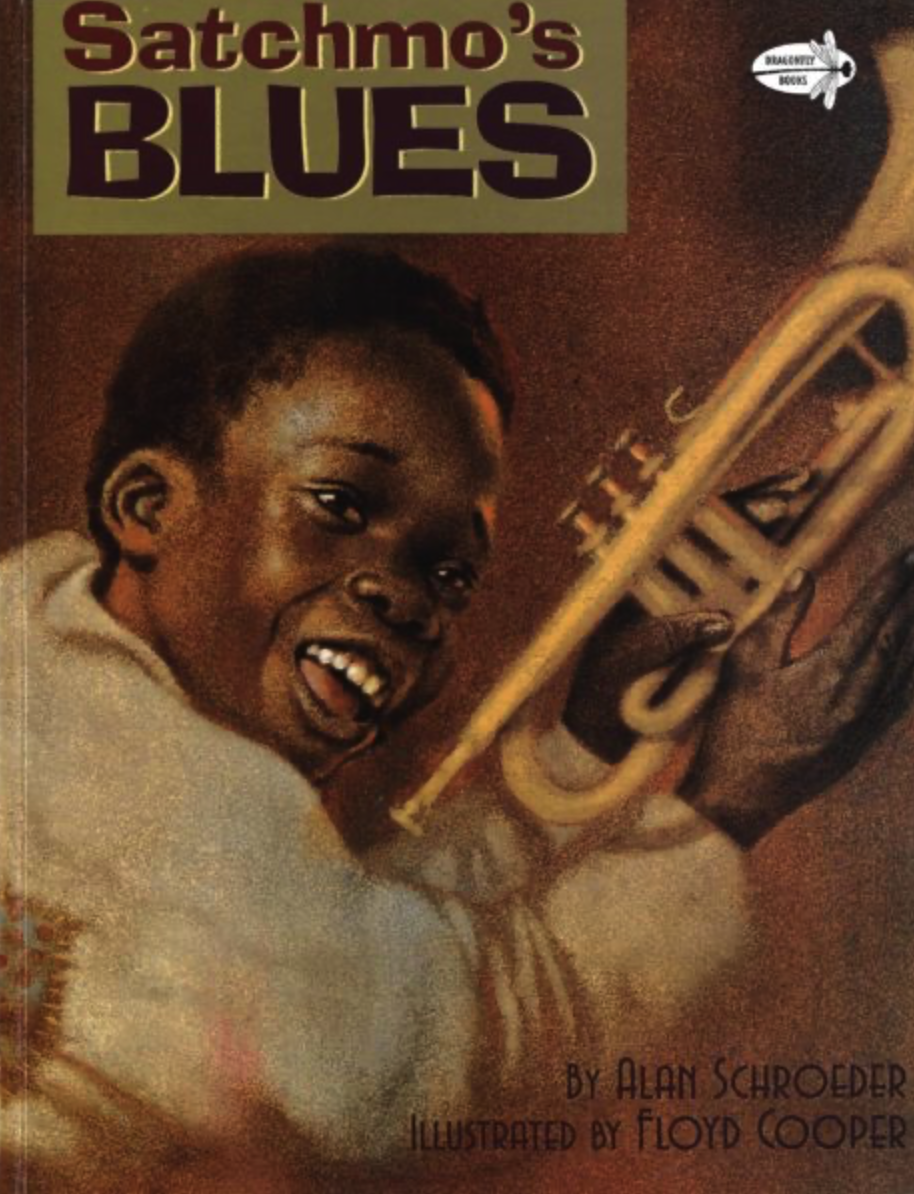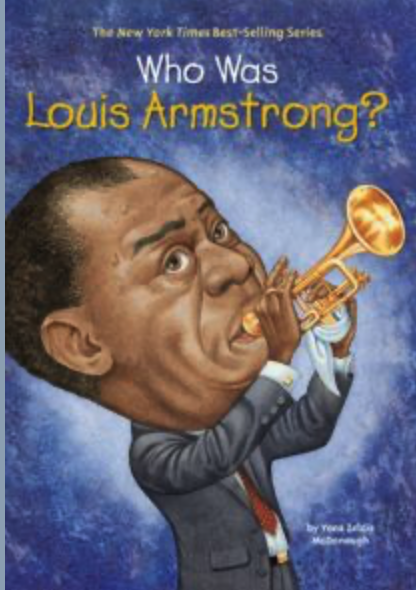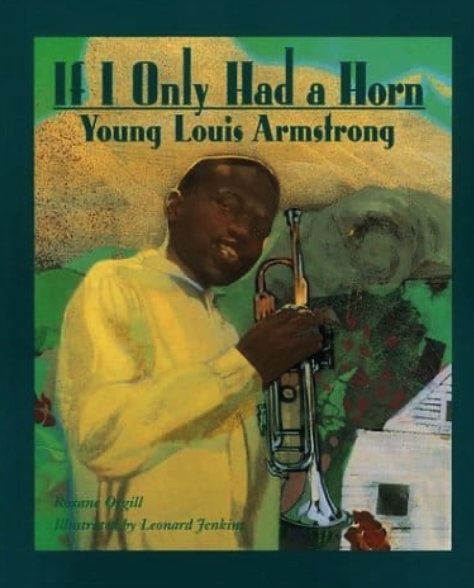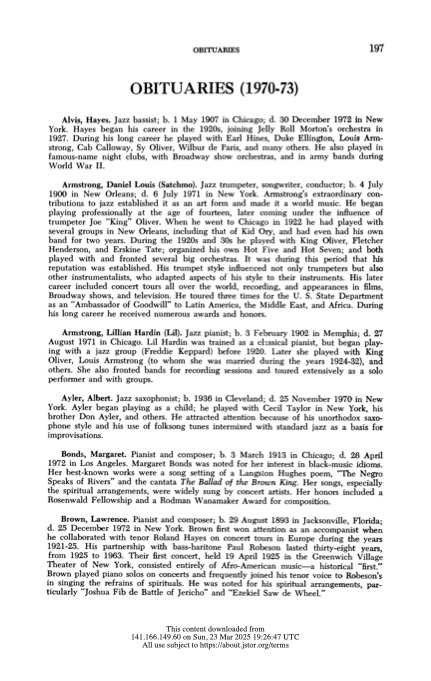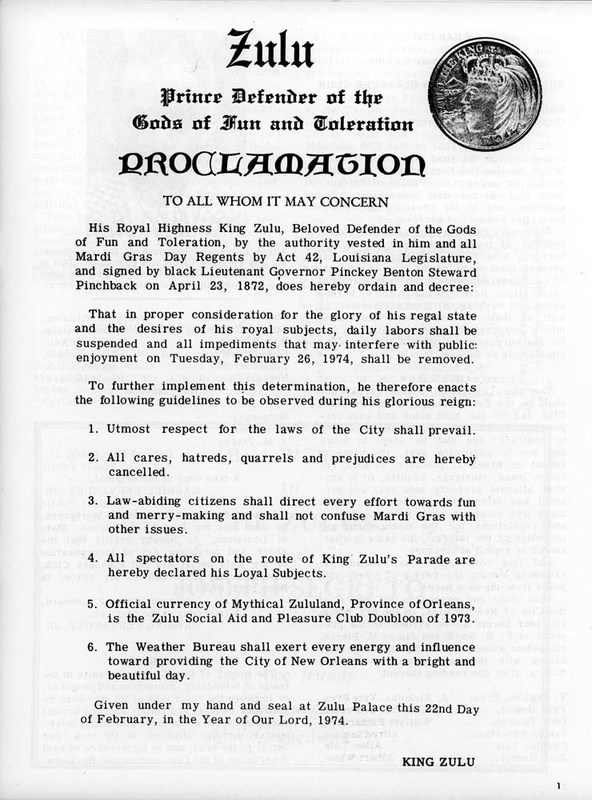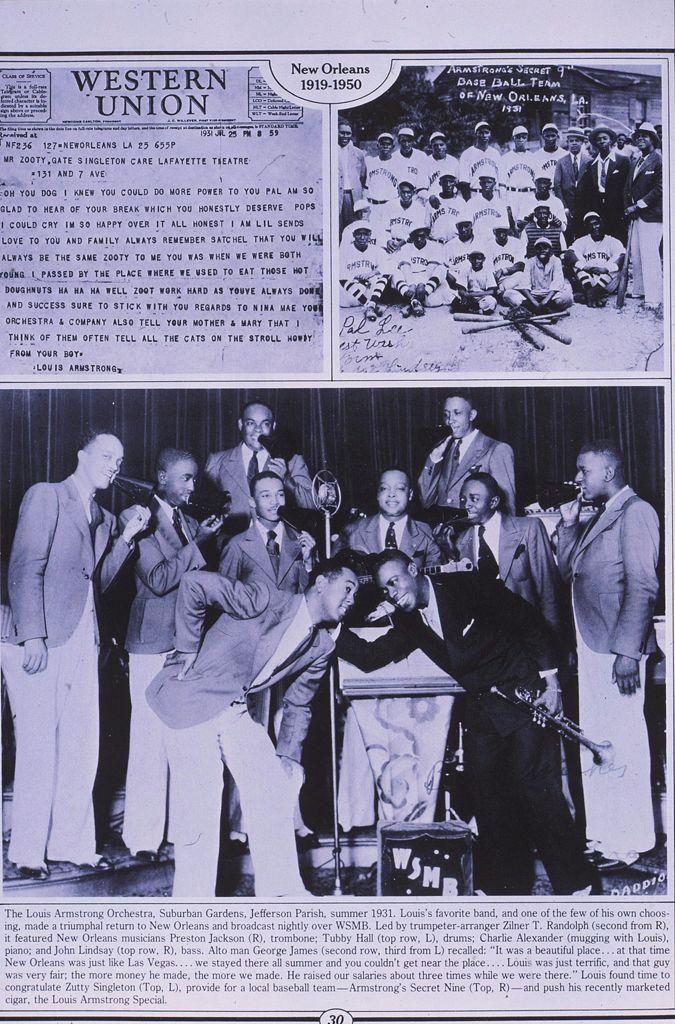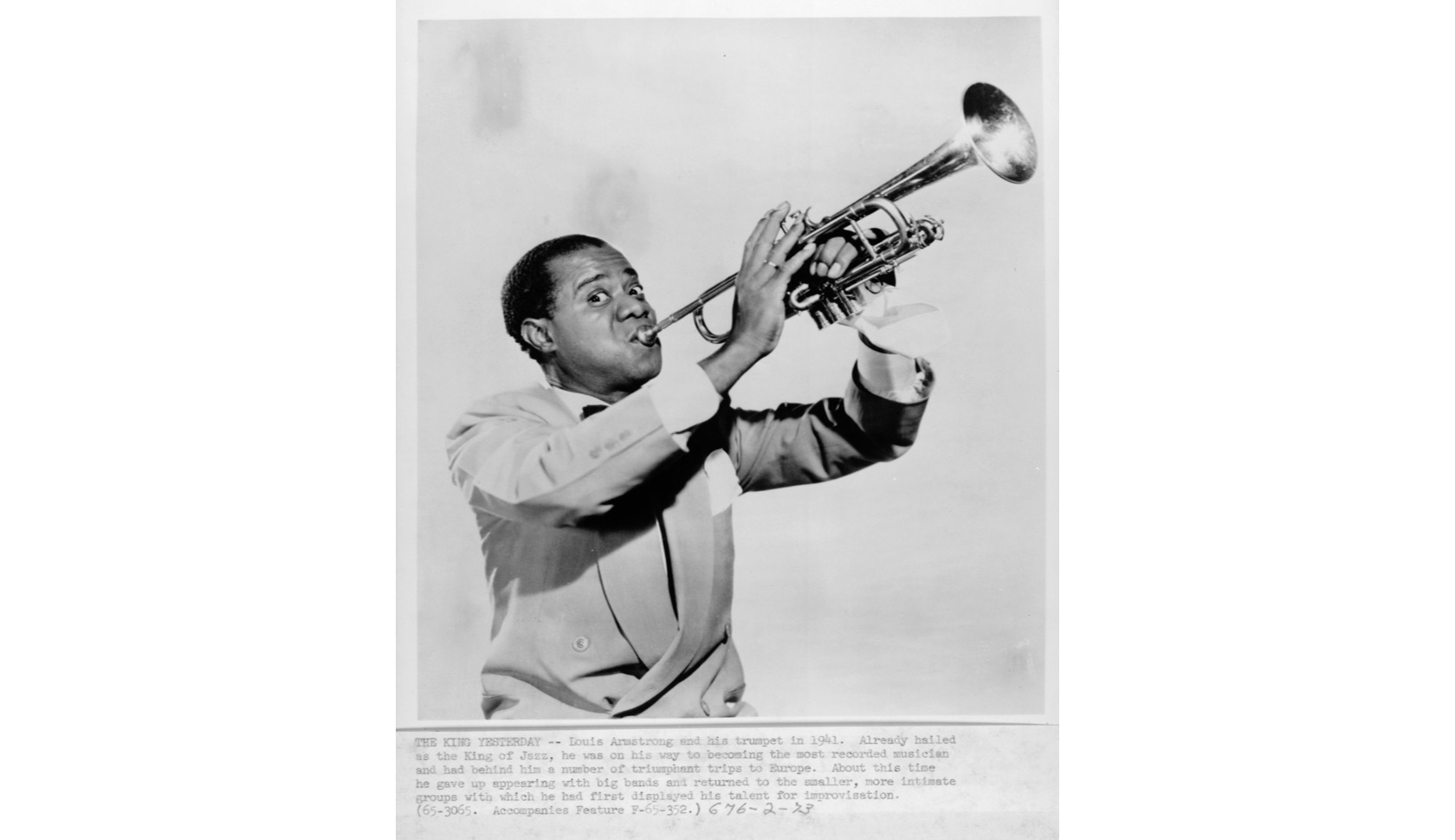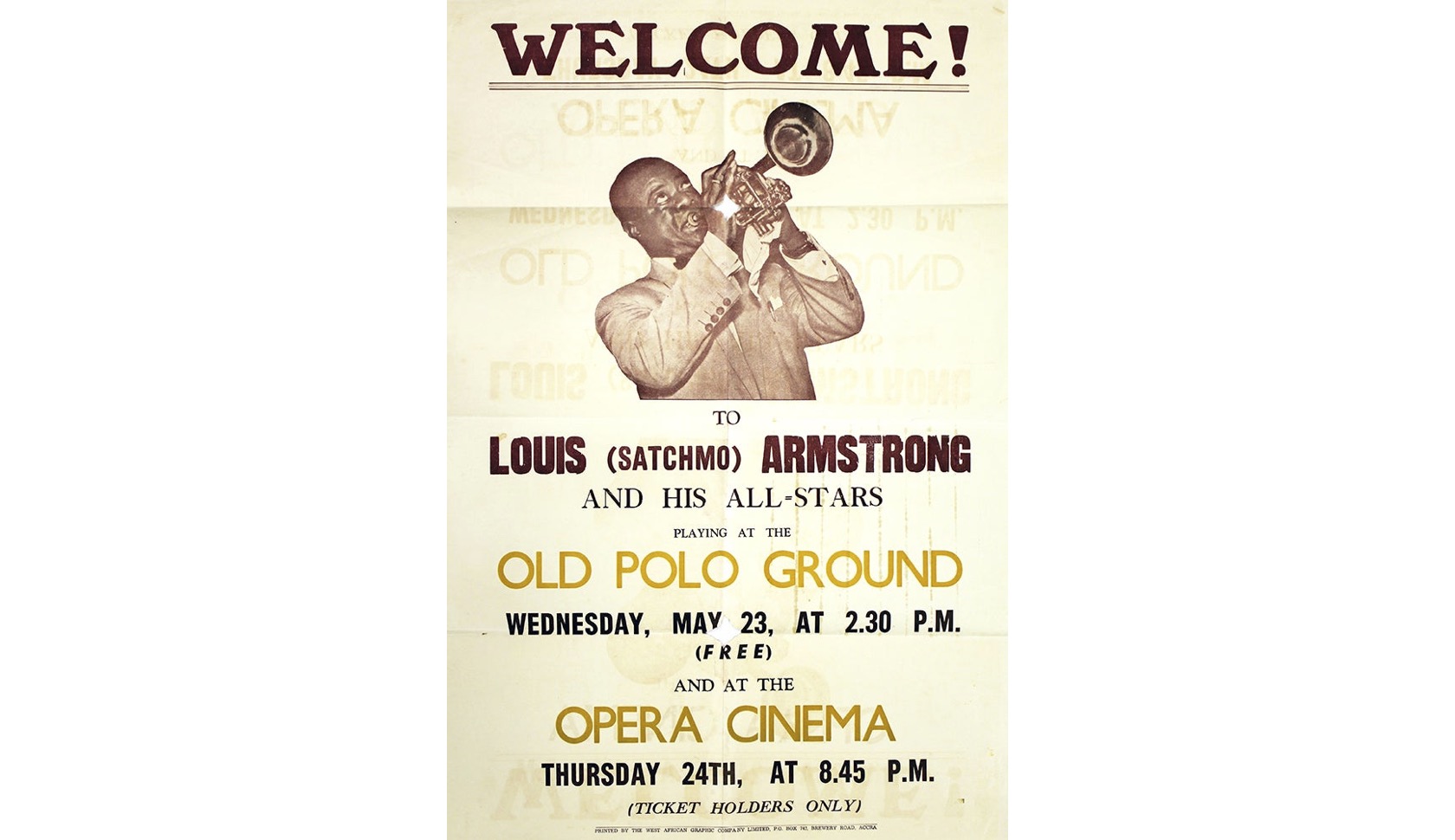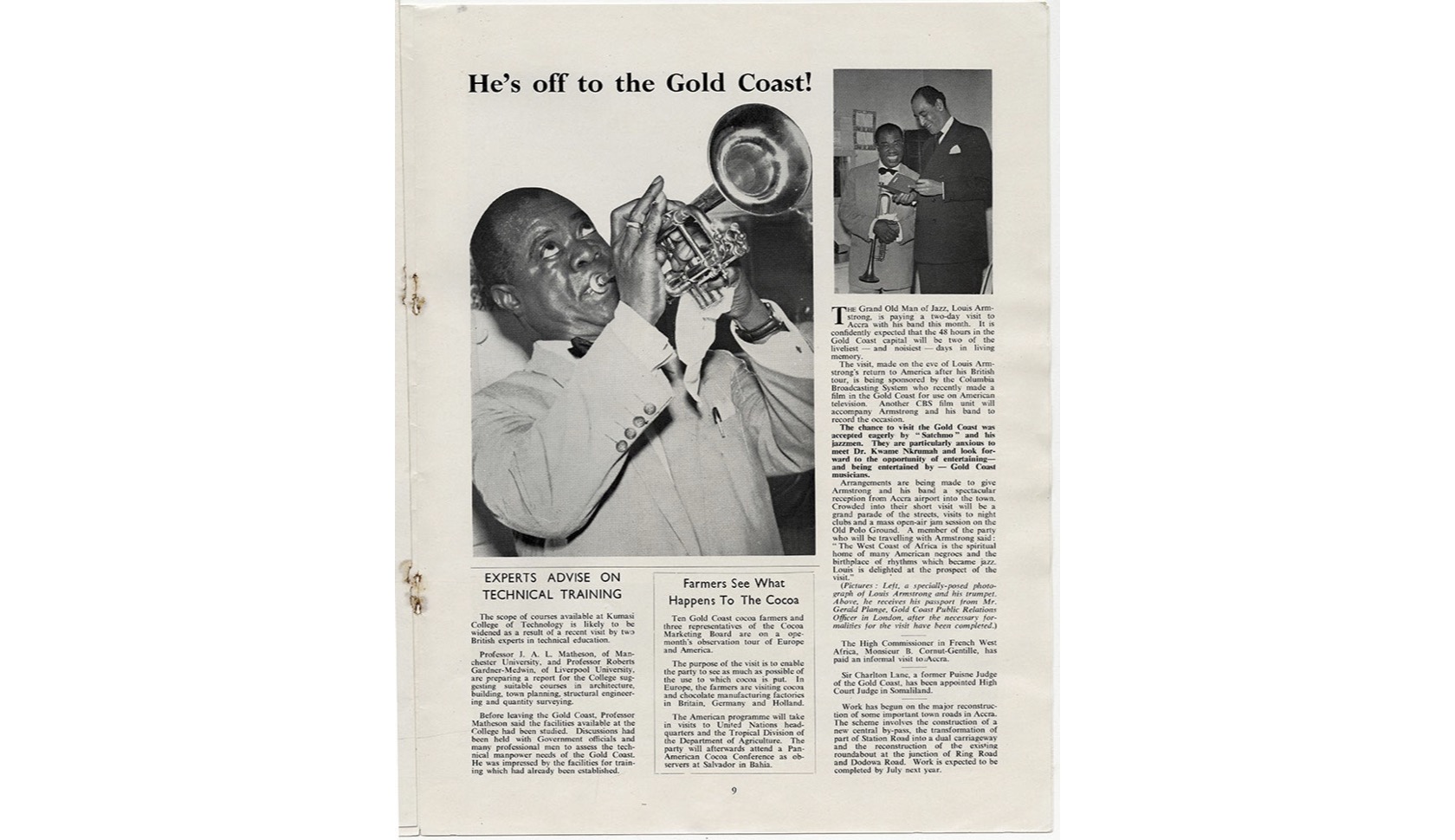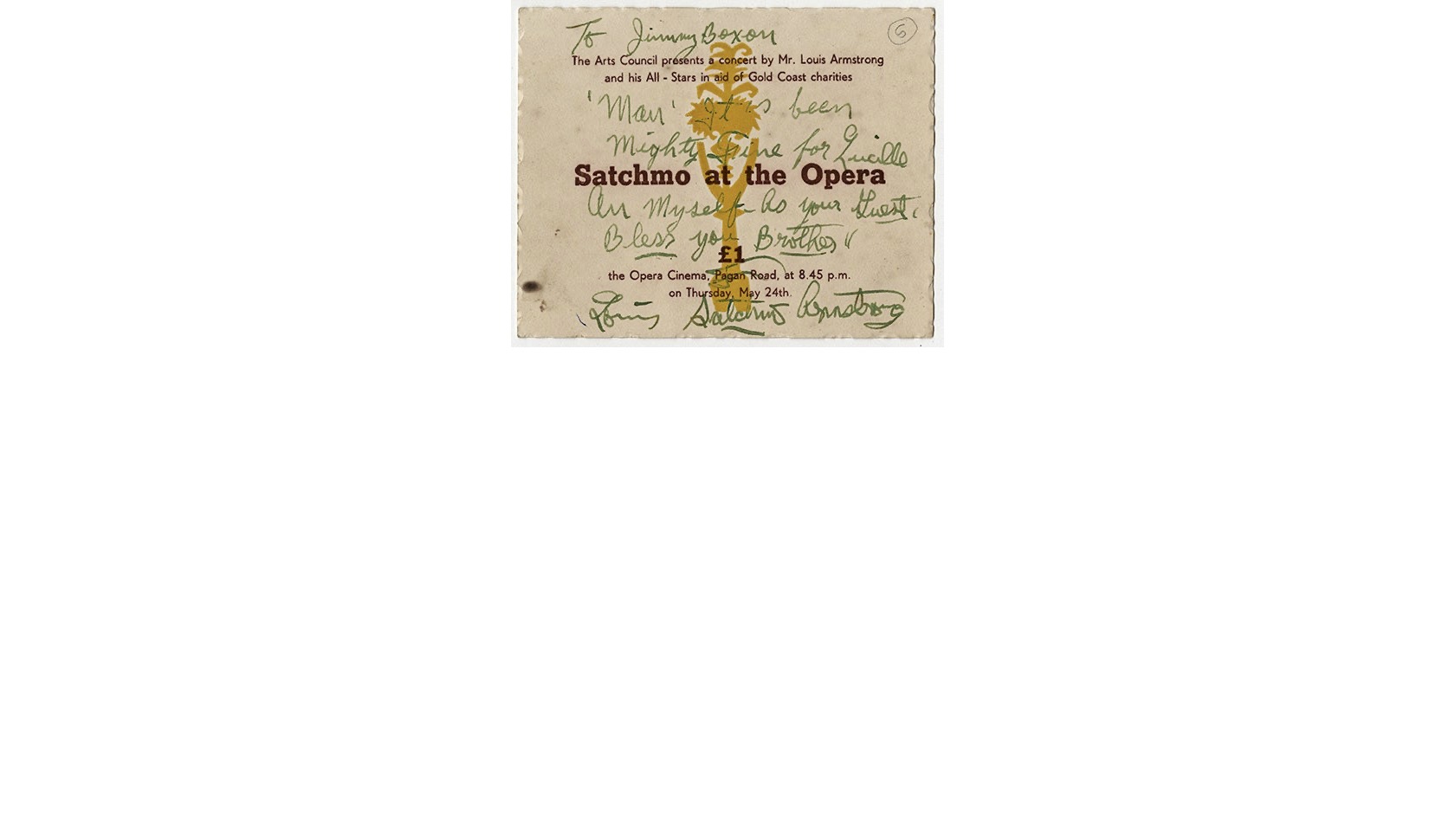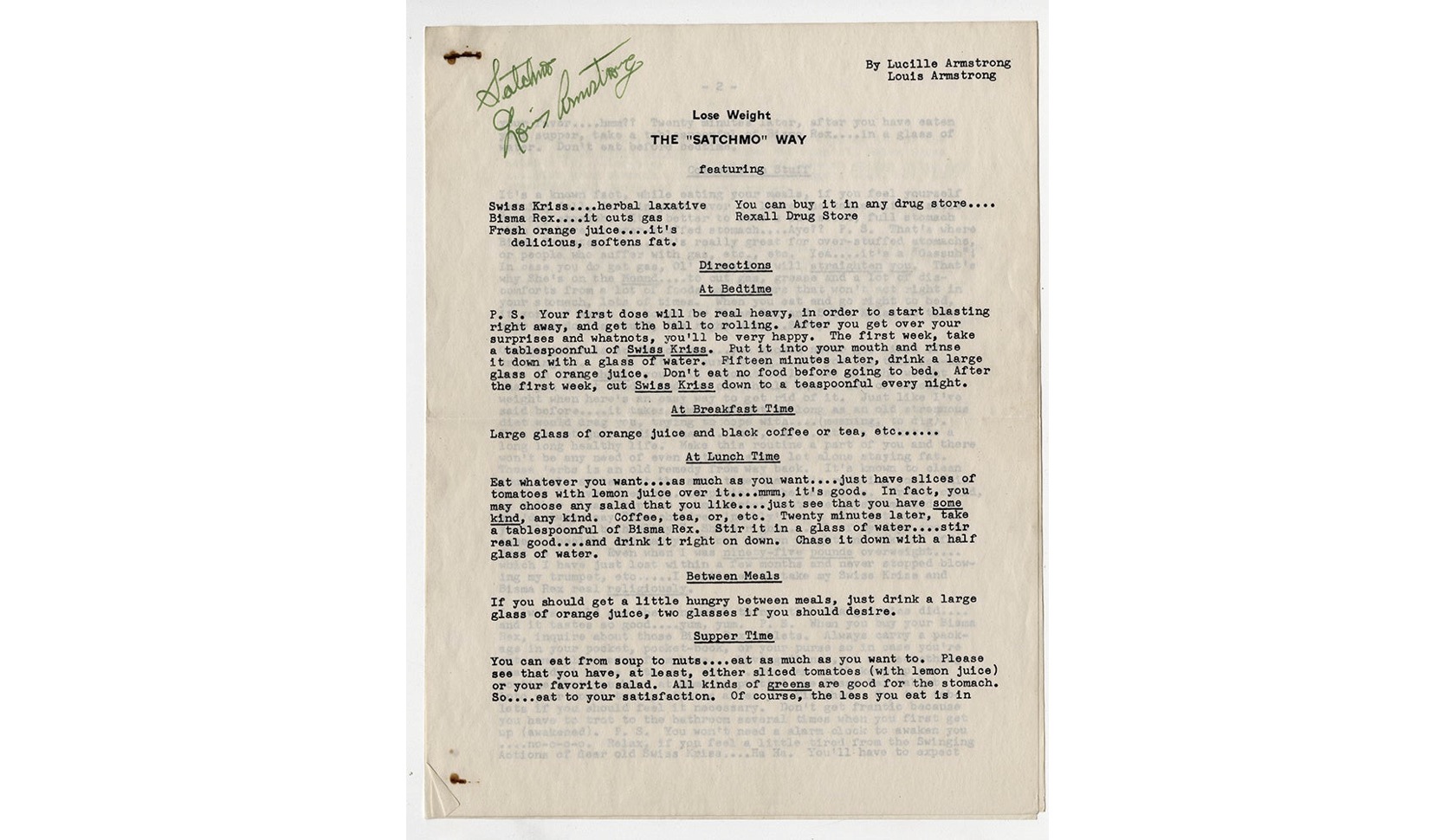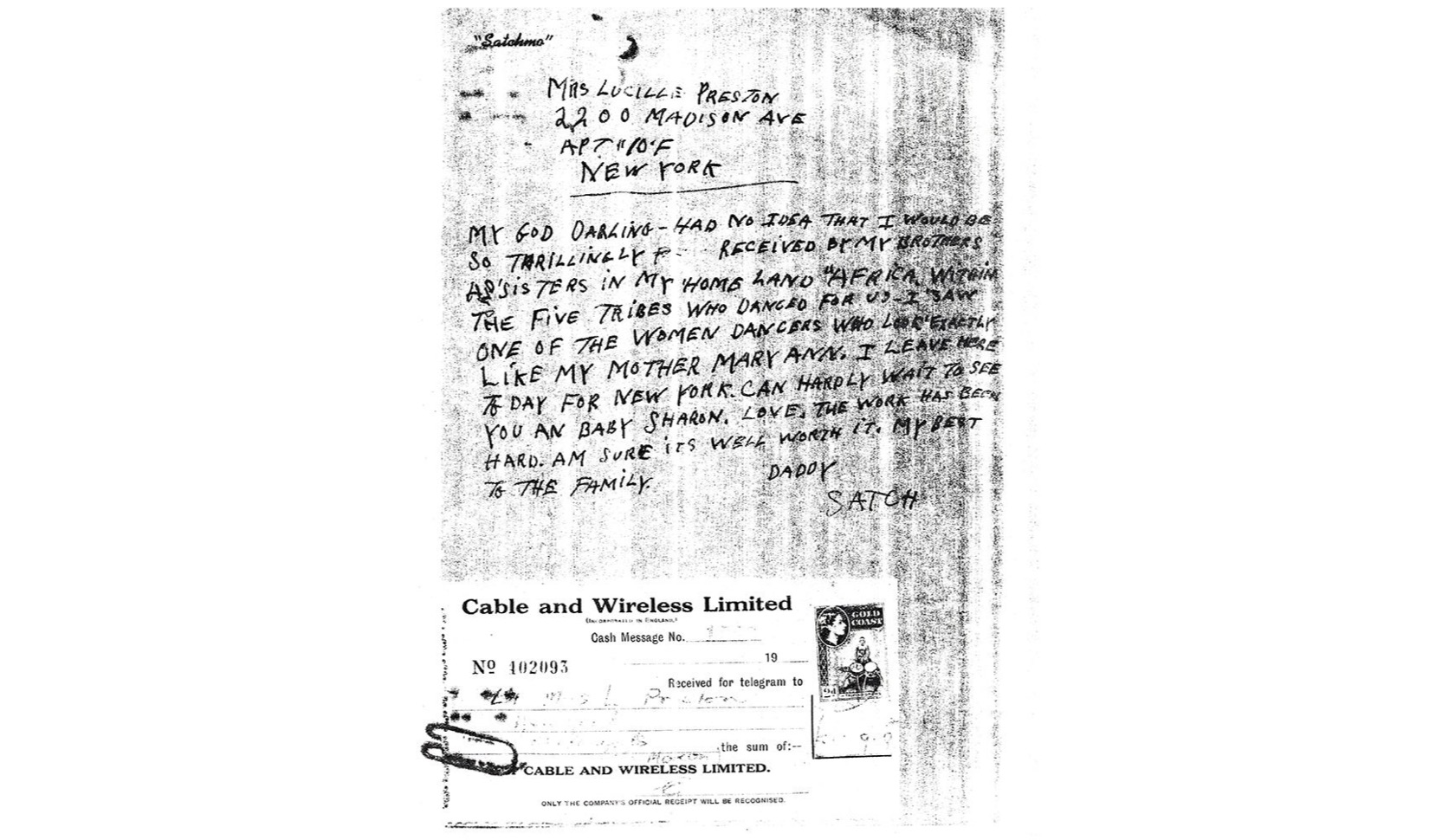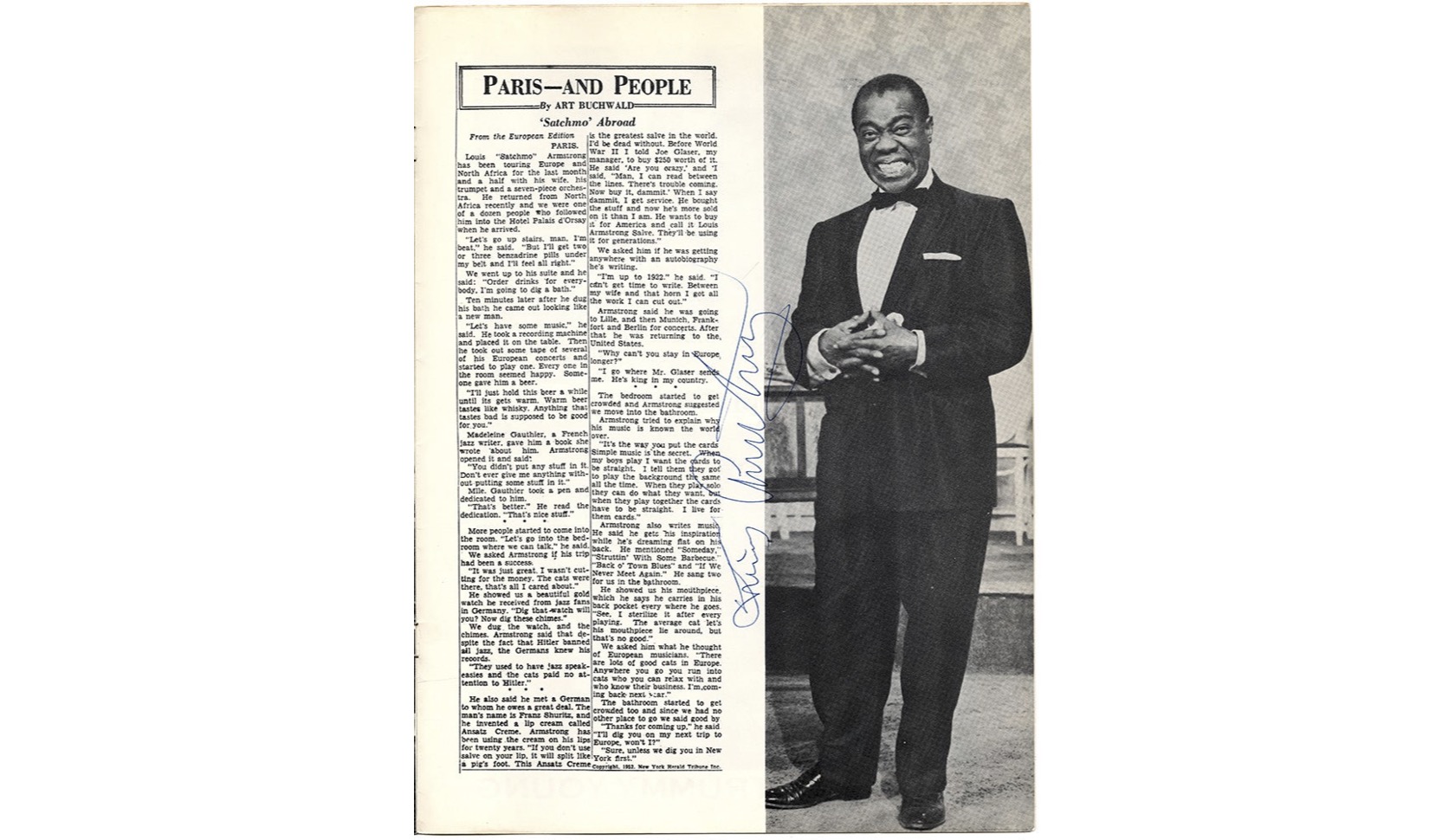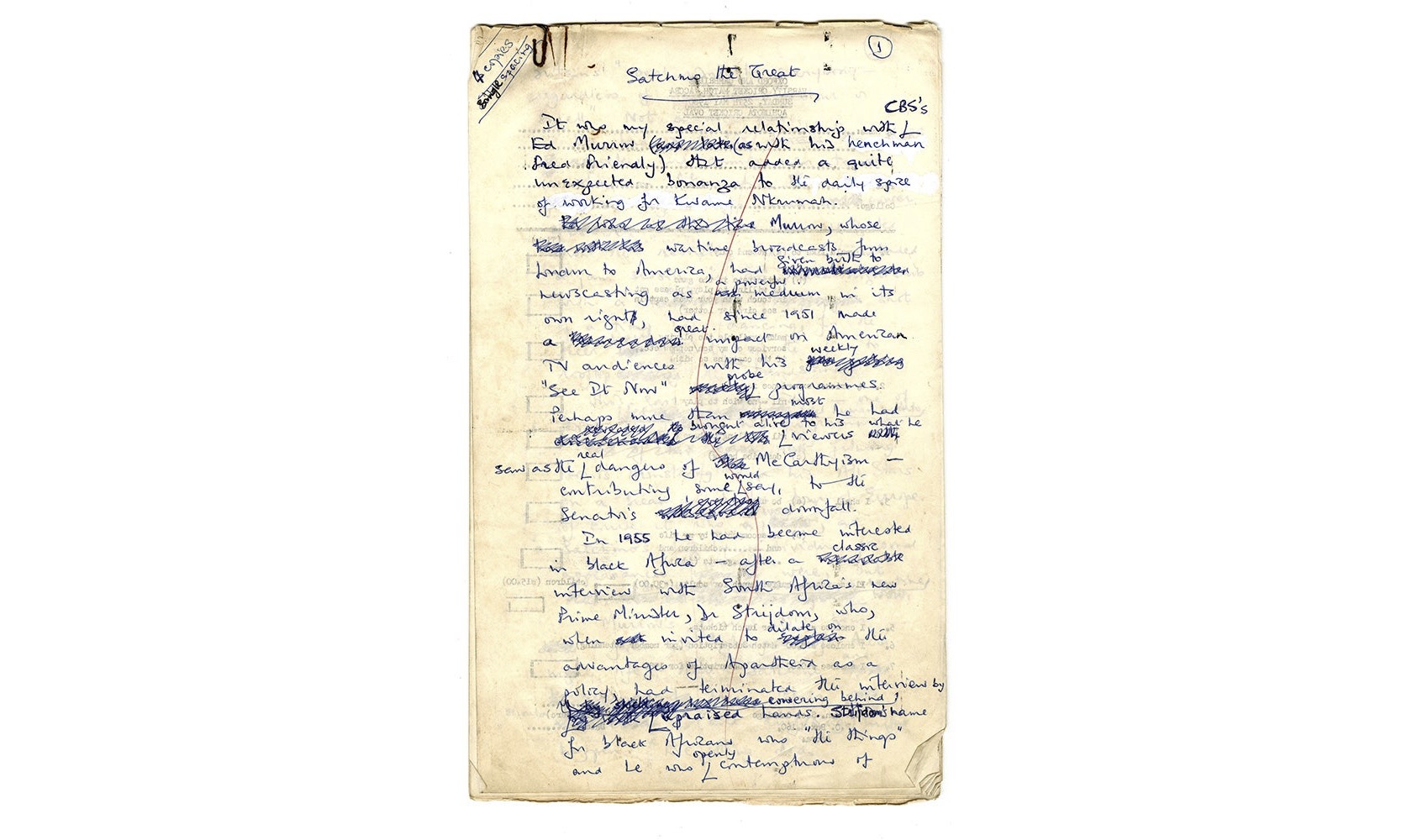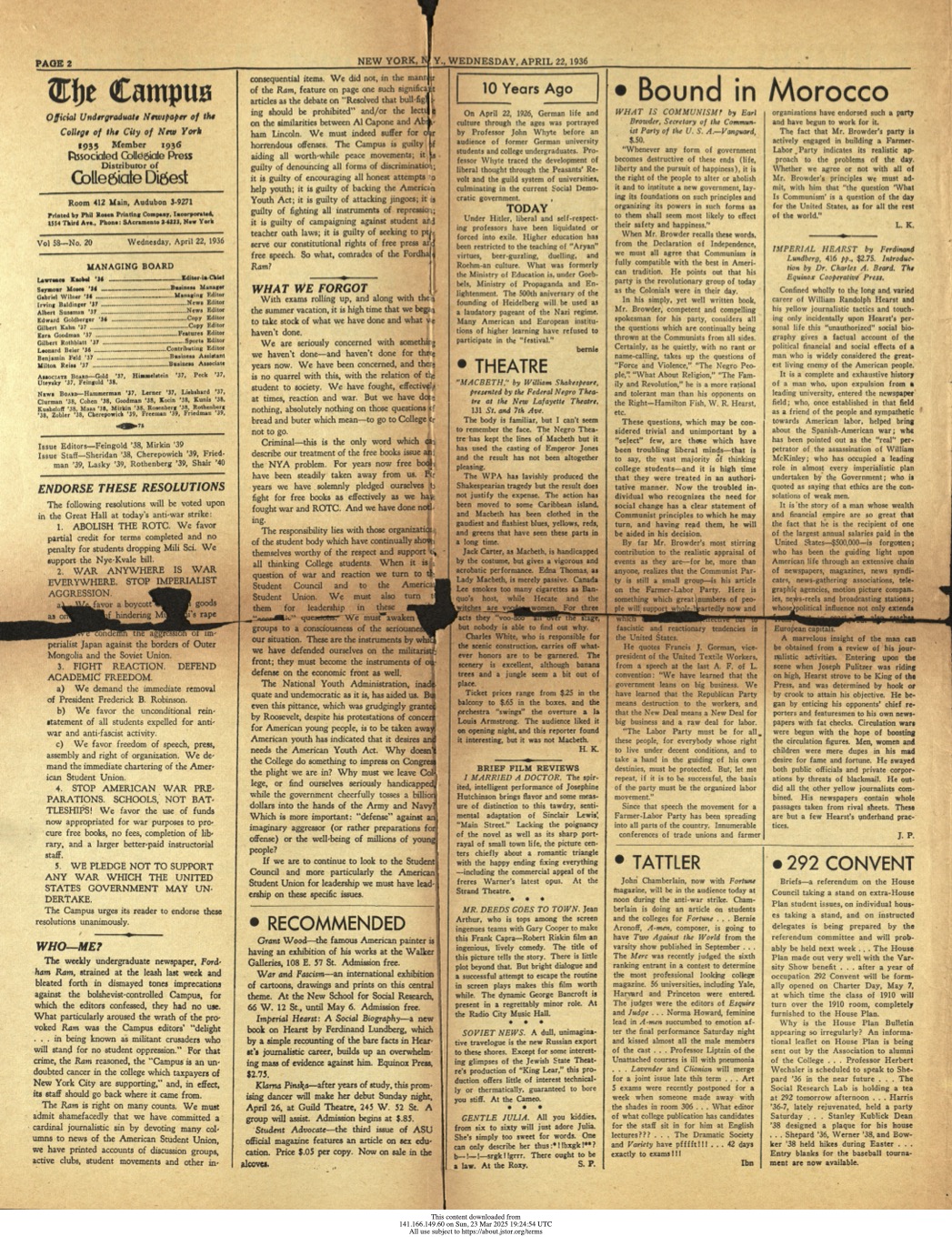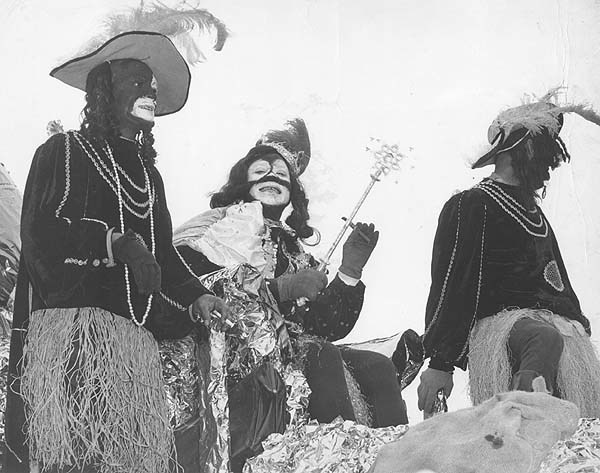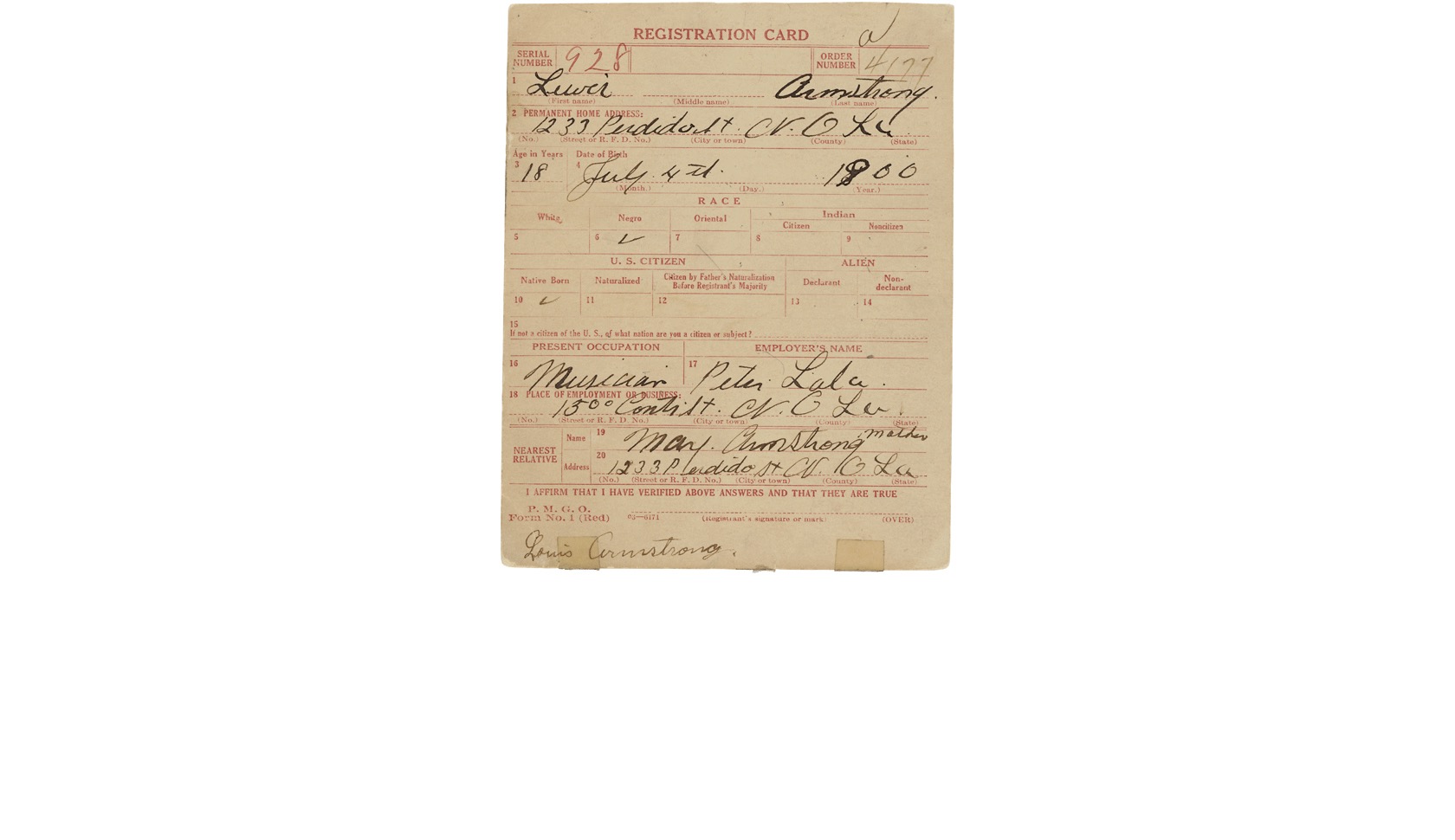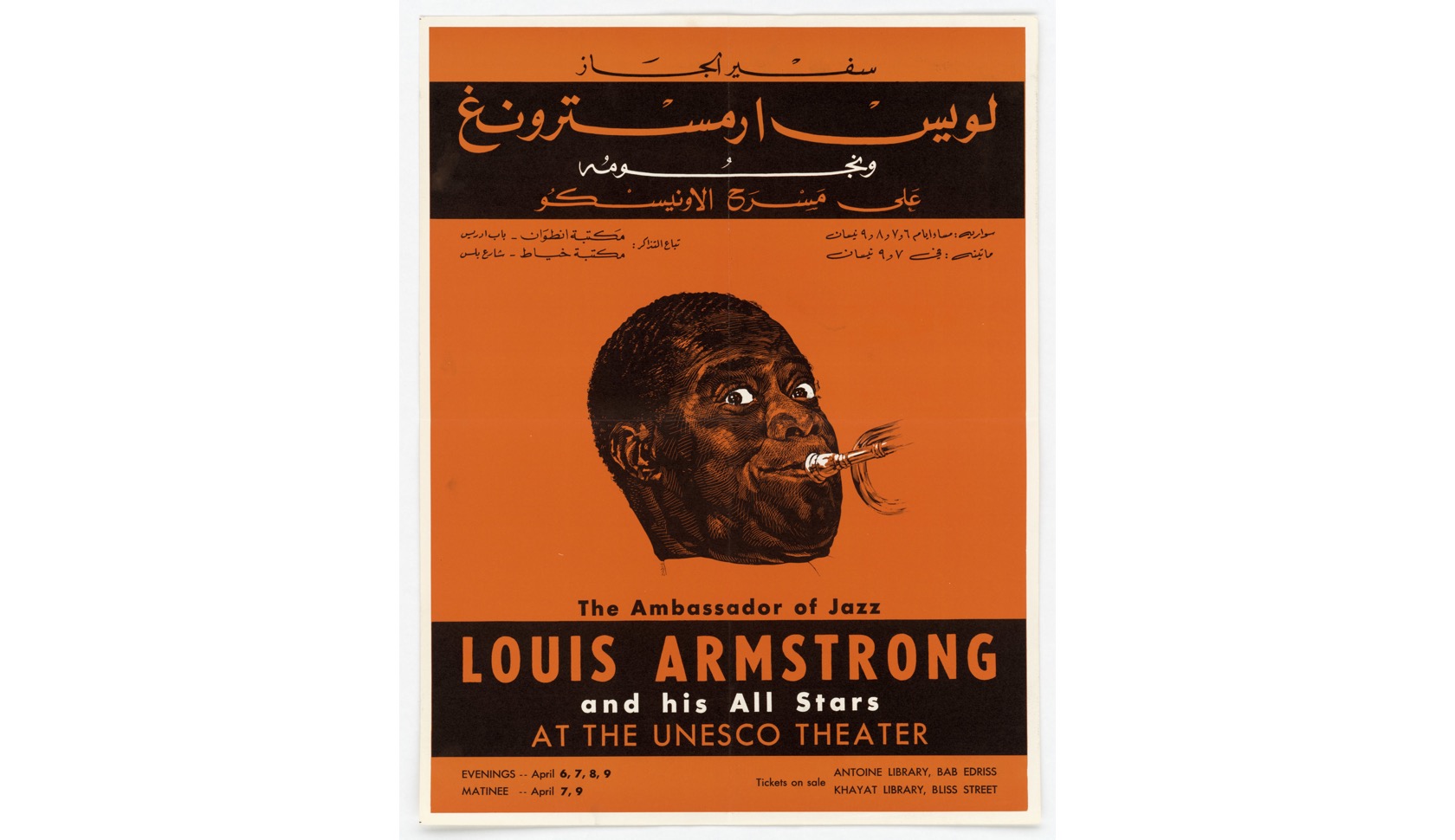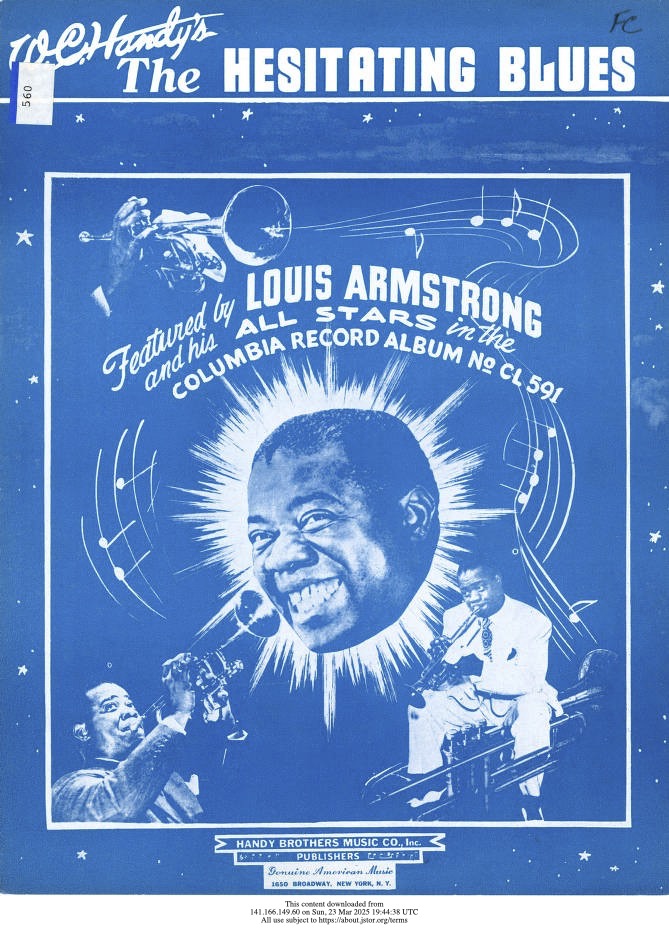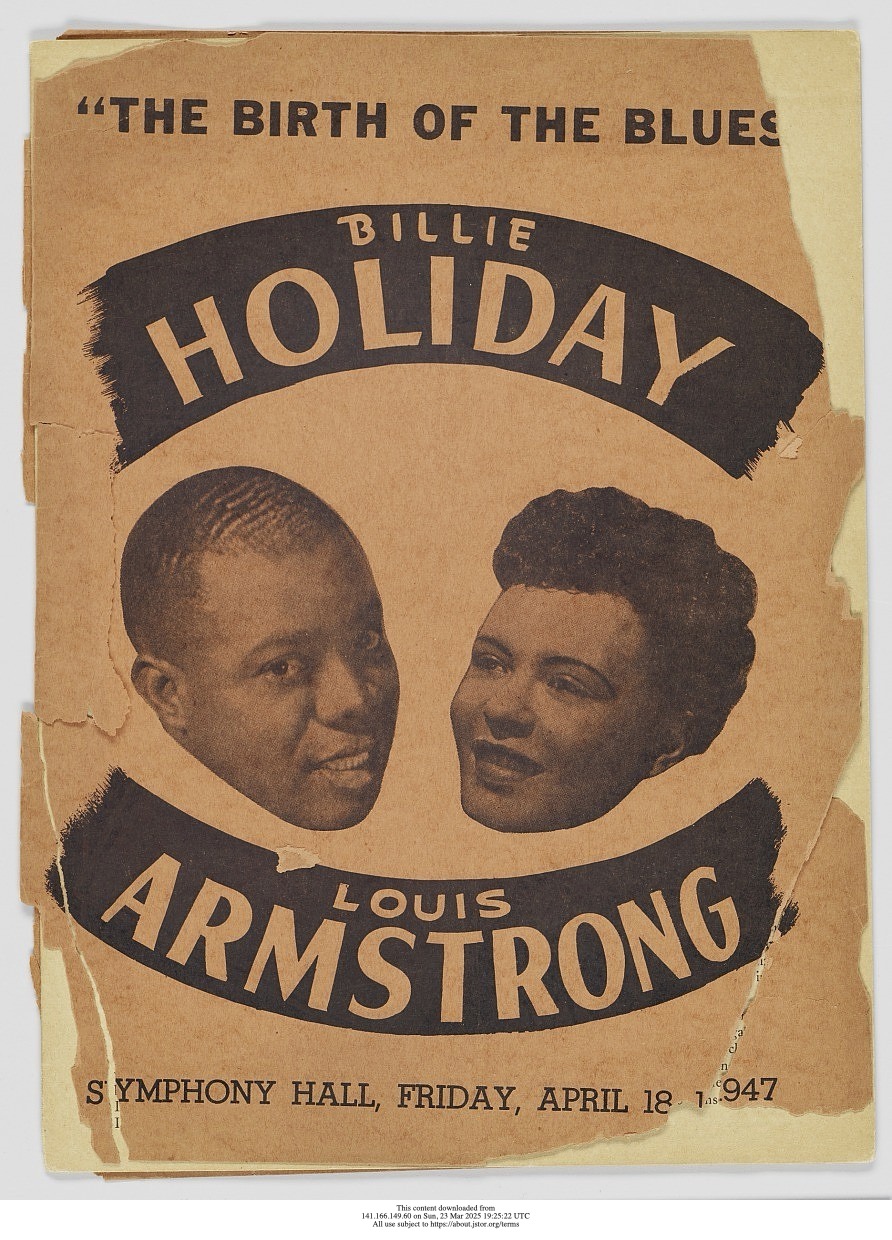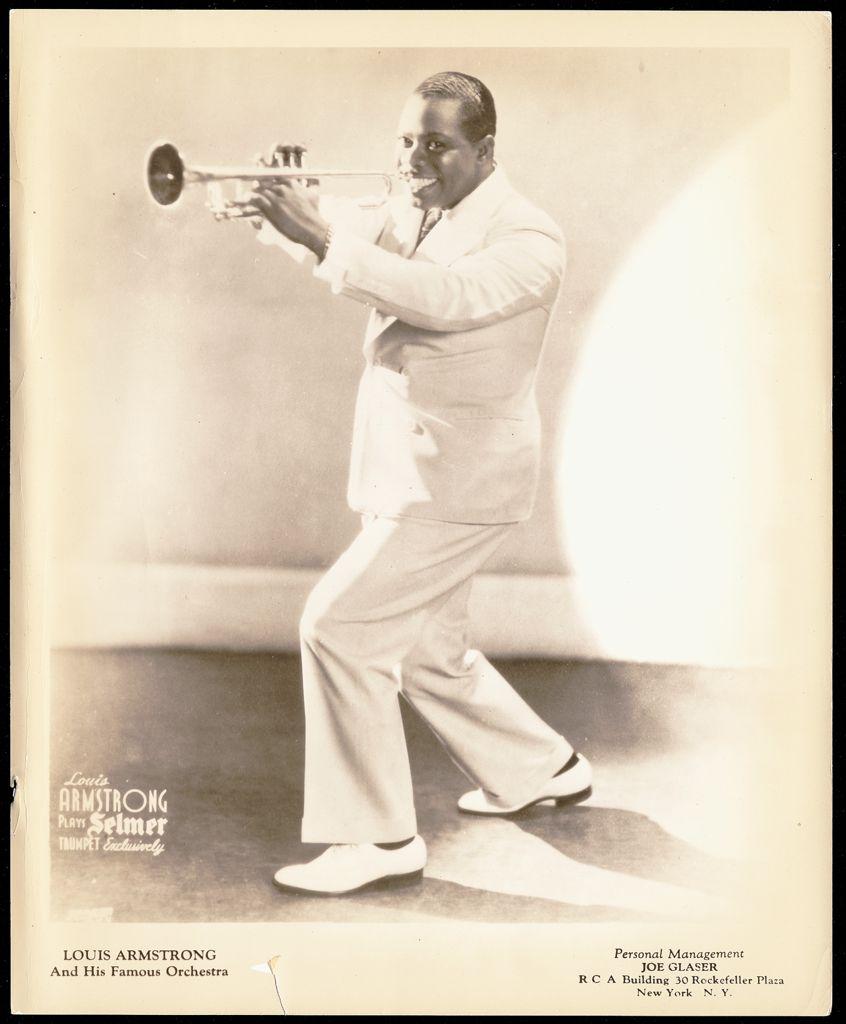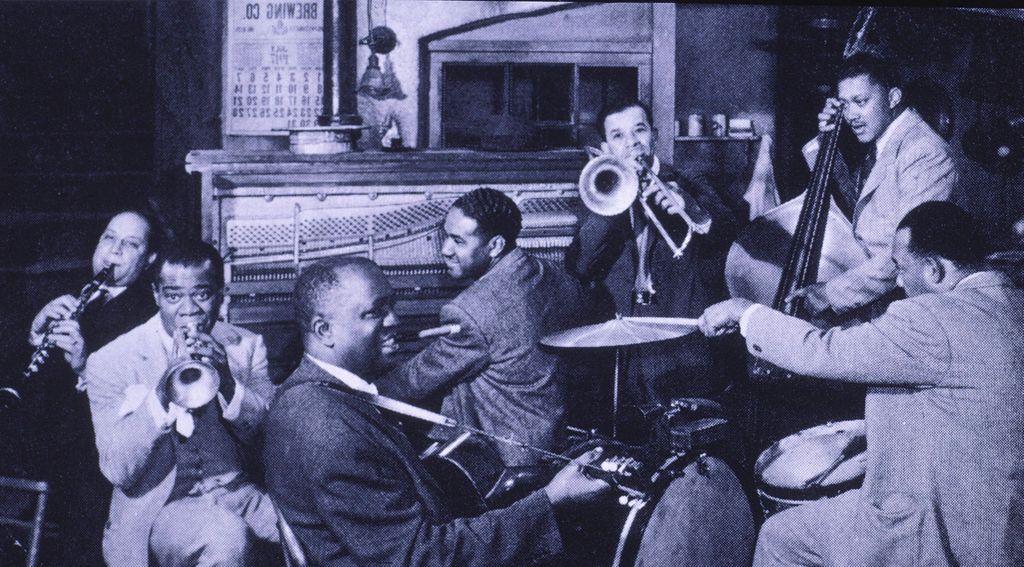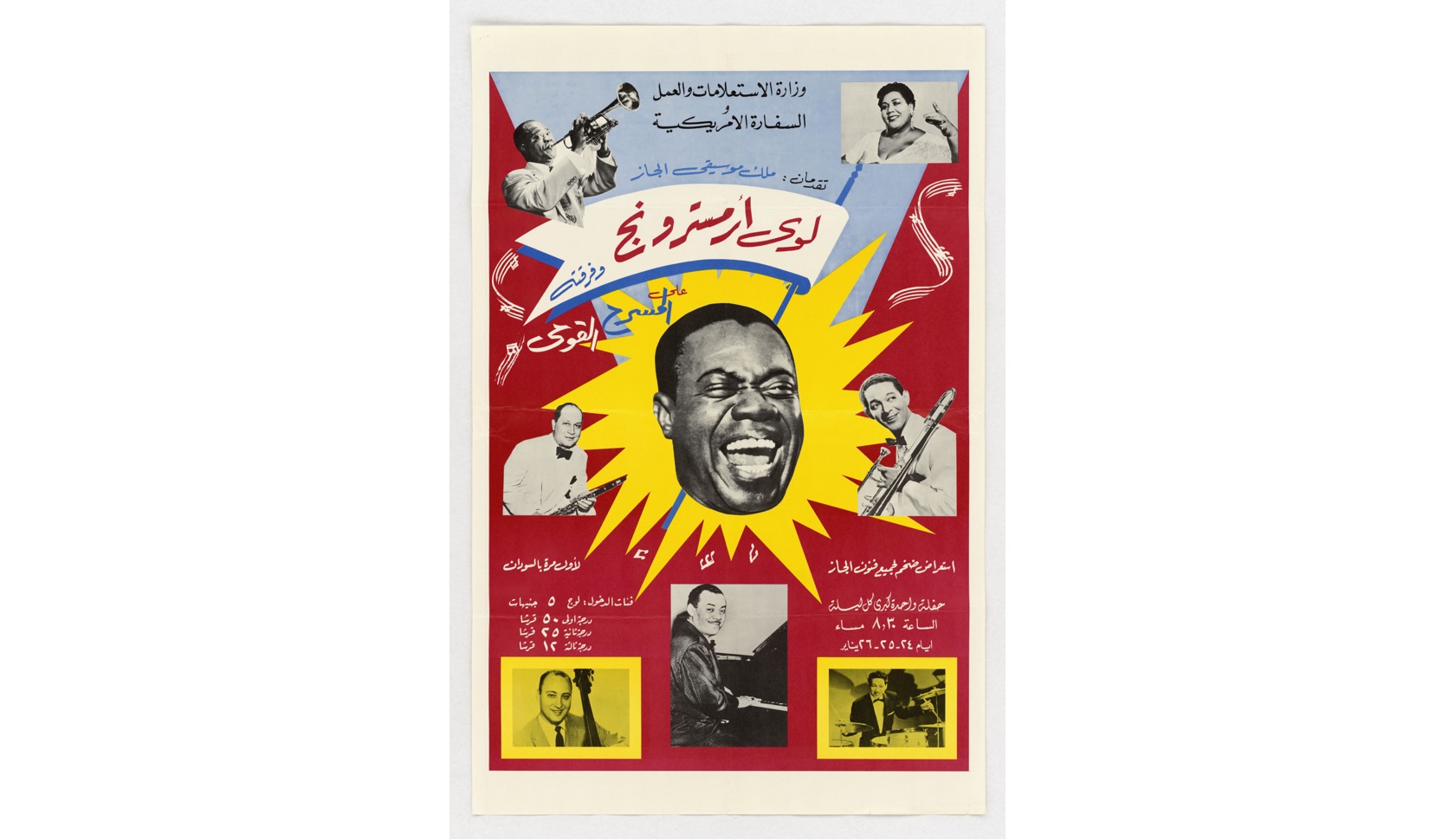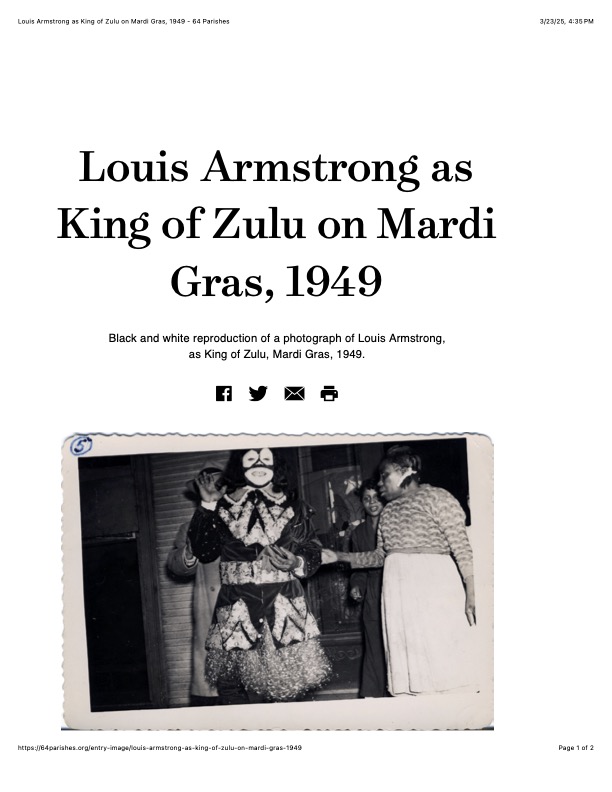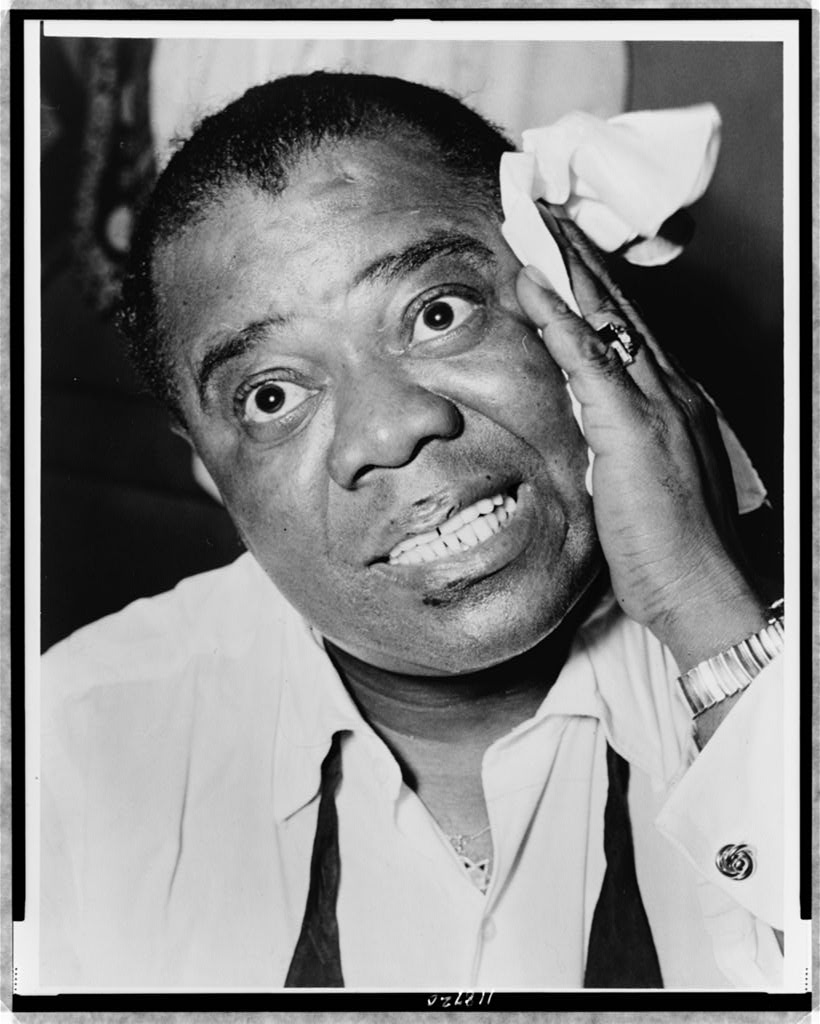This album was created by a member of the TPS Teachers Network, a professional social media network for educators, funded by a grant from the Library of Congress. For more information, visit tpsteachersnetwork.org.
Louis Armstrong
Album Description
 jazzmusic
jazzmusic  jazz music
jazz music  zulu
zulu  civilrightsmovement
civilrightsmovement  louisarmstrong
louisarmstrong  satchmo
satchmo  Louisiana
Louisiana  trumpet
trumpet  whatawonderfulworld
whatawonderfulworld  satch
satch  Ambassadorsatch
Ambassadorsatch  civilrightspioneer
civilrightspioneer  Social Studies/History
Social Studies/History  3 - 5
3 - 5  6 - 8
6 - 8  UShistory
UShistory  jazzhistory
jazzhistory  Art/Music
Art/Music
This album contains primary and secondary sources about Louis Armstrong. The prominent topics addressed within this album are (1) Armstrong's unique approach to jazz and art, (2) Armstrong's great influence on the growing music industry, (3) Armstrong's involvement and activism in the Civil Rights Movement, and (4) Armstrong's life and legacy in the US. This album will provide teachers and students learning about US History, the Civil Rights Movement, and the history of jazz with sources to support learning and a deeper understanding of the events that occurred through the lens of Louis Armstrong's life. This album covers a variety of SOL topics addressed in 4th grade and above, even spanning economics, civics, and foreign relations. Louis Armstrong is a prominent figure in Louisiana's history and was a huge topic of conversation in my elementary education growing up in New Orleans.
Louis Armstrong Broke Barriers With Music, Optimism, and the Sheer Force of His Personality
[Louis Armstrong plays trumpet while Joey Adams, president of the American Guild of Variety Artists Youth Fund, presents him with an award at Carnegie Hall]
Reference link: http://www.loc.gov/item/97518794/
Reference note
Created / Published
- 1966.
Genre
- Portrait photographs--1960-1970
- Photographic prints--1960-1970
Notes
- - New York World-Telegram and the Sun Newspaper Photograph Collection (Library of Congress).
Repository
- Library of Congress Prints and Photographs Division Washington, D.C. 20540 USA
Digital Id
- cph 3c18976 //hdl.loc.gov/loc.pnp/cph.3c18976
[Danny Kaye, Barbara Bel Geddes, Tuesday Weld, Louis Armstrong and band perform on stage - scene from "The Five Pennies"]
Reference link: http://www.loc.gov/item/2023862430/
Reference note
Created / Published
- [Place of production not identified] : Dena Pictures Incorporated, 1958.
Genre
- Photographs
Notes
- - Location: Box 671.
- - Production photograph from the film "The Five Pennies."
- - For information about this resource, refer to finding aid available at https://hdl.loc.gov/loc.music/eadmus.mu012007
- - Record created through migration from the Performing Arts Encyclopedia Database.
Repository
- c-Music Danny Kaye and Sylvia Fine Collection Refer to finding aid
The Five Pennies Saints
Reference link: http://www.loc.gov/item/2023862281/
Reference note
Created / Published
- Hollywood : Dena Music, Inc., 1959.
Notes
- - Adaptaion for Danny Kaye and Louis Armstrong of "When the Saints Go Marching In."
- - At top: From - Paramount Pictures Present The Dena Production -The Five Pennies)
- - Location: Box 463, Folder 2.
- - Two stave vocal score with chord symbols written above top staff.
- - For information about this resource, refer to finding aid available at https://hdl.loc.gov/loc.music/eadmus.mu012007
- - Record created through migration from the Performing Arts Encyclopedia Database.
Repository
- c-Music Danny Kaye and Sylvia Fine Collection Refer to finding aid
Las Cinco Monedas
Reference link: http://www.loc.gov/item/2023862076/
Reference note
Created / Published
- Buenos Aires : Fermata, 1960.
Notes
- - Location: Box 443, Folder 1.
- - On cover: Photograph of Louis Armstrong and Danny Kaye.
- - Spanish translation/adaptation is provided on page 3 but the lyrics above the music is in English.
- - For information about this resource, refer to finding aid available at https://hdl.loc.gov/loc.music/eadmus.mu012007
- - Record created through migration from the Performing Arts Encyclopedia Database.
Repository
- c-Music Danny Kaye and Sylvia Fine Collection Refer to finding aid
I Cinque Pennies
Reference link: http://www.loc.gov/item/2023862075/
Reference note
Created / Published
- Milano : Edizioni Curci, 1959.
Notes
- - A collection of songs from the film 'The Five Pennies' translated and adapted for Italian performers.
- - Location: Box 443, Folder 1.
- - On cover: a photograph of Louis Armstrong and Danny Kaye.
- - For information about this resource, refer to finding aid available at https://hdl.loc.gov/loc.music/eadmus.mu012007
- - Record created through migration from the Performing Arts Encyclopedia Database.
Repository
- c-Music Danny Kaye and Sylvia Fine Collection Refer to finding aid
[Louis Armstrong, head-and-shoulders portrait, facing front, looking at trumpet] / World Telegram & Sun photo by Herman Hiller.
Reference link: http://www.loc.gov/item/00652635/
Reference note
Created / Published
- 1953.
Genre
- Portrait photographs--1950-1960
- Photographic prints--1950-1960
Notes
- - NYWT&S staff photograph.
- - Forms part of: New York World-Telegram and the Sun Newspaper Photograph Collection (Library of Congress).
Repository
- Library of Congress Prints and Photographs Division Washington, D.C. 20540 USA
Digital Id
- cph 3c27235 //hdl.loc.gov/loc.pnp/cph.3c27235
[Portrait of Louis Armstrong, between 1938 and 1948]
Reference link: http://www.loc.gov/item/2023868449/
Reference note
Created / Published
- [1938?]
Genre
- Portrait photographs--1930-1950
Notes
- - Gottlieb Collection Assignment No. 040
- - Original negative or transparency: 1 negative : b&w ; 3 1/4 x 4 1/4 in. Library of Congress Prints and Photographs Division. Originals not served.
- - Originals Purchase; William P. Gottlieb, 1995-1997
- - Record created through migration from the Performing Arts Encyclopedia Database.
Repository
- c-Music Electronic resource
[Portrait of Louis Armstrong, Aquarium, New York, N.Y., ca. July 1946]
Reference link: http://www.loc.gov/item/2023867420/
Reference note
Created / Published
- 1946.
Genre
- Portrait photographs--1940-1950
Notes
- - Caption from Down Beat: These are the things that make up Louis Armstrong, as reflected in the mirror by Bill Gottlieb, staff lensman, in the third of his intimate studies of musical celebs in their dressing rooms. Here are his throat spray and other medications (Louie vocalizes as much as he plays trumpet, you know), the inevitable stack of handkerchiefs (he uses them by the dozen), and copies of the diet by which he lost 60 poinds in one year, distributed gratis to all over-weight friends and acquaintances
- - Gottlieb Collection Assignment No. 011
- - In: "Through the looking glass," Down Beat, v. 13, no. 15 (July 15, 1946), p. 21.
- - Reference print available in Music Division, Library of Congress.
- - Original negative or transparency: 1 negative : b&w ; 3 1/4 x 4 1/4 in. Library of Congress Prints and Photographs Division. Originals not served.
- - Originals Purchase; William P. Gottlieb, 1995-1997
- - Record created through migration from the Performing Arts Encyclopedia Database.
Repository
- c-Music Electronic resource
Freedom Now: Jazz & the Civil Rights Movement
Reference link: https://www.loc.gov/item/2021690135/
Reference note
Summary: Library of Congress jazz scholar Dan Morgenstern discusses the role of jazz music throughout the Civil Rights movement in the 20th century.
Created / Published: Washington, D.C. : Library of Congress, 2016-04-21.
Notes: - Classification: Music and Books on Music. - Daniel Morgenstern. - Recorded on 2016-04-21. - Teachers. - Visitors.
Digital Id: https://hdl.loc.gov/loc.gdc/gdcwebcasts.160421mus1830
Saints Go Marchin' In
Reference link: http://www.loc.gov/item/2023862845/
Reference note
Genre
- Manuscripts
Notes
- - For the film "The Five Pennies"
- - Location: Box 491, Folder 2.
- - Various versions and edits arranged by date.
- - Written as a duet between Louis Armstrong and Danny Kaye.
- - For information about this resource, refer to finding aid available at https://hdl.loc.gov/loc.music/eadmus.mu012007
- - Record created through migration from the Performing Arts Encyclopedia Database.
Repository
- c-Music Danny Kaye and Sylvia Fine Collection Refer to finding aid
Music's Voice in the American Civil Rights Movement
[Louis Armstrong and his All Stars]
Reference link: http://www.loc.gov/item/2023865232/
Reference note
Created / Published
- 1950's.
Notes
- - From Louise Mulligan's scrap book
- - Lewisohn Stadium of the City College, Amsterdam Avenue, 136-138th Street. Newspaper clipping promoting concert by Louis Armstrong with Gerry Mulligan. The names are incorrectly given as Dizzy Mulligan and Gerry Armstrong.
- - Title was truncated from lenghthy version to shortened version.
- - For information about this resource, refer to finding aid available at https://hdl.loc.gov/loc.music/eadmus.mu011017
- - Record created through migration from the Performing Arts Encyclopedia Database.
Repository
- c-Music Gerry Mulligan Collection Refer to finding aid
Louis Armstrong Broke Silence On Civil Rights In 1957
Poisoning Their Coffee: Louis Armstrong and Civil Rights
Jazz Concert with Louis Armstrong and The All Stars
Photo of Louis Armstrong interacting with a local African chief
Invitation to Mensah’s Night Club dated May 23, 1956
Satchmo at the Opera. Illustrated Program given to attendees of the May 24 concert at the Accra Opera House. 8pp. [Accra 1956]
Jazz Concert with Louis Armstrong and The All Stars
Satchmo's Blues By Alan Schroeder, Illustrated by Floyd Cooper
Reference link: https://a.co/d/h1K5Llj
Reference note
Author's Note:
On hot summer nights in New Orleans, a boy named Louis Armstrong would peek under the big swinging doors of Economy Hall and listen to the jazz band. The best night was Friday, when Bunk Johnson would blow his cornet till the roof trembled. At moments like those, Louis could feel his toes tingle. He wanted to be like Bunk Johnson; aim his horn straight up at the night sky and set the stars spinning.
One day Louis saw a horn in a pawnshop window—a real brass cornet. The cardboard sign said $5. How could he ever come up with that much money? Every day Louis did what he could to earn that five dollars, and every day he practiced blowing his imaginary horn. It was a dream he would never give up.
The vibrant, swinging world of New Orleans jazz seems to bounce off the pages in this tribute to an extraordinary young man. Louis Armstrong's dynamic personality and amazing trumpet playing would cast a spell on millions of people around the world, to whom he will always be the one and only Satchmo, the Ambassador of Jazz.
Who Was Louis Armstrong? By Yona Zeldis McDonough, Illustrated by John O’Brien
Reference link: https://a.co/d/eo0LJxS
Reference note
Author's Note:
If not for a stint in reform school, young Louis Armstrong might never have become a musician. It was a teacher at the Colored Waifs Home who gave him a cornet, promoted him to band leader, and saw talent in the tough kid from the even tougher New Orleans neighborhood called Storyville. But it was Louis Armstrong's own passion and genius that pushed jazz into new and exciting realms with his amazing, improvisational trumpet playing. His seventy-year life spanned a critical time in American music as well as black history.
If I Only Had a Horn: Young Louis Armstrong By Roxanne Orgill, Illustrated by Leonard Jenkins
Reference link: https://a.co/d/5x5F5AY
Reference note
Author's Note:
Roxane Orgill’s vivid words and Leonard Jenkins’s dramatic pictures combine to tell the story of a boy who grew up to be a giant of jazz—the legendary and beloved Louis Armstrong. As a poor boy in New Orleans, where music was everywhere—dancing out of doorways, singing on street corners, crying from the cornet of the great Joe Oliver for all to hear—Louis longed for a horn so that he too could sing, bring home pennies, and, most of all, tap happy-feet blues till the sun rose. It wasn’t going to be easy. Many things, not all of them good, had to happen before he got his horn. But when at last he did, he sent music spiraling up into the New Orleans night sky like a spinning top gone crazy.
Daniel Louis (Satchmo) Armstrong Obituary
Zulu Social Aid and Pleasure Club Official Mardi Gras 1974 Special
Reference link: https://neworleanshistorical.org/items/show/1469
Suburbian Gardens: Zilmer Randolph, Preston Jackson, Tubby Hall, Charlie Alexander, John Linsay, Geo James
Louis Armstrong, 1941
“Welcome to Louis Armstrong … Playing at the Old Polo Ground … And at the Opera Cinema”
The Gold Coast Today
VIP Pass to “Satchmo at the Opera” performance on May 24. Inscribed by Armstrong to Moxon thanking him for his hospitality. [Accra, 1956].
"Lose Weight the Satchmo Way"
Telegram from Louis Armstrong to Lucille Preston
Signed program of The Ambassador of Jazz in his Triumphant Anniversary Engagement at the World Famous Roxy Theatre New York City 1957
Satchmo the Great
The Campus, Vol.58, No.20, Wednesday, April 22, 1936
Louis Armstrong reigning as King Zulu, 1949
Reference link: https://neworleanshistorical.org/items/show/1469#&gid=1&pid=1
Louis Armstrong’s World War I Draft Registration Card
Poster in Arabic advertising Armstrong’s performance in Beirut at the UNESCO Theater
The hesitating blues
The Birth of the Blues
Louis Armstrong-1936
New Orleans /director: det.: New Orelans Veterans
Poster in Arabic advertising Armstrong’s Middle East tour
Louis Armstrong as King of Zulu on Mardi Gras, 1949
“I’m Still Louis Armstrong–Colored”: Louis Armstrong and the Civil Rights Era
[Louis Armstrong, head-and-shoulders portrait, facing front] / World Telegram & Sun photo by Herman Hiller.
Reference link: http://www.loc.gov/item/97518323/
Reference note
Created / Published
- 1953.
Genre
- Portrait photographs--1950-1960
- Photographic prints--1950-1960
Notes
- - NYWT&S staff photo.
- - New York World-Telegram and the Sun Newspaper Photograph Collection (Library of Congress).
Repository
- Library of Congress Prints and Photographs Division Washington, D.C. 20540 USA
Digital Id
- cph 3c18720 //hdl.loc.gov/loc.pnp/cph.3c18720

